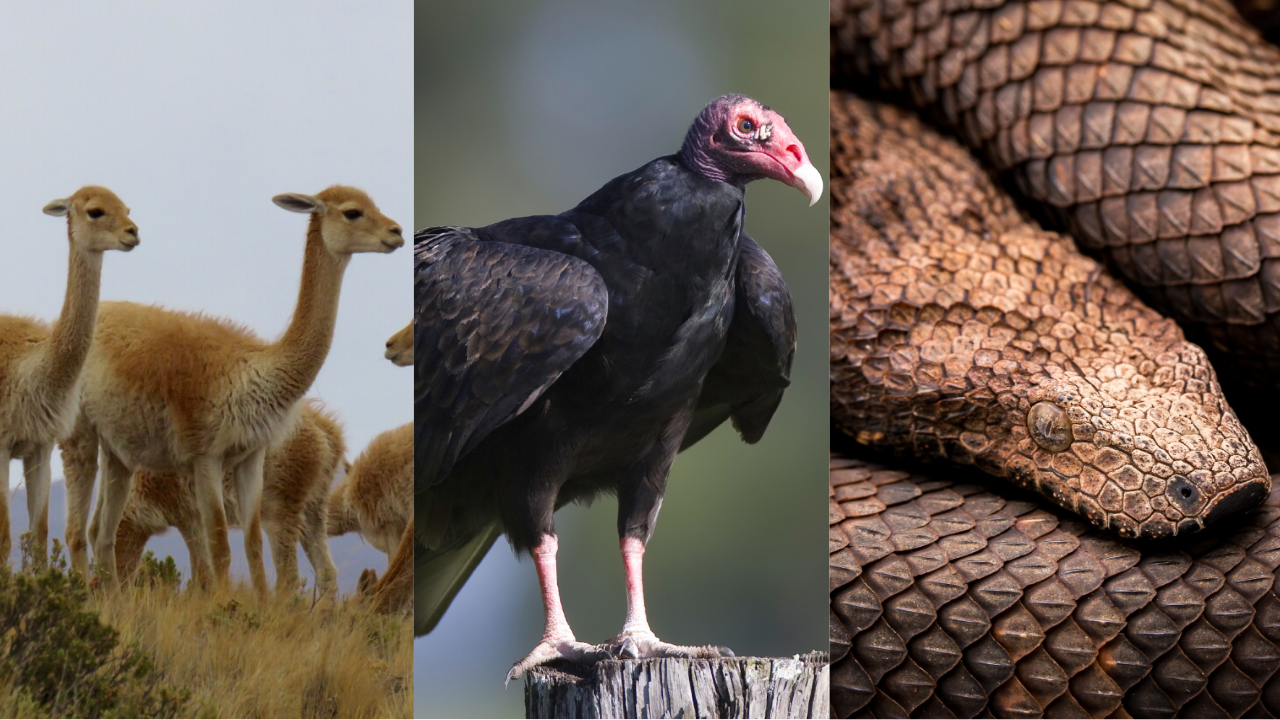
The letter “V” unveils a remarkable slice of the animal kingdom that commands attention.
From the soaring Vulture riding thermal currents to the microscopic Vampire Mite extracting blood from unsuspecting hosts, these creatures showcase nature’s brilliant design work.
The venomous Viper with its lightning-fast strike or the ethereal Violet Sea Snail floating upside-down on self-made bubble rafts—each demonstrates extraordinary adaptations.
While not the most common first letter in animal names, “V” compensates with extraordinary diversity spanning every continent and ocean depth.
These animals range from the familiar household Vietnamese Pot-bellied Pig to the critically endangered Vaquita porpoise, of which fewer than ten individuals remain. Are you ready to meet these remarkable creatures?
Popular Animals that Start with “V”
1. Vulture
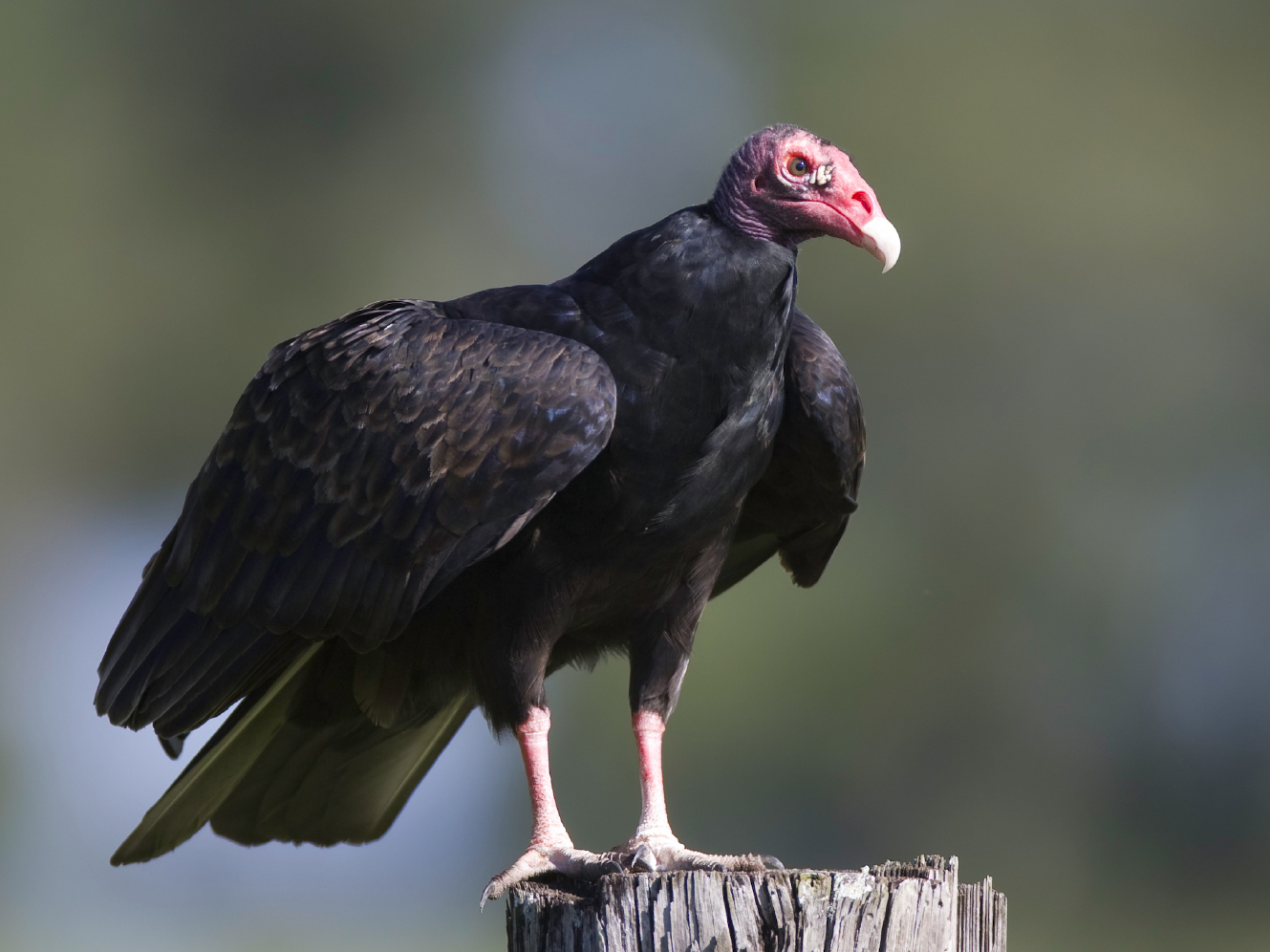
The Vulture has a large body with broad wings, a featherless head, and a powerful hooked beak for tearing flesh.
It possesses exceptional eyesight, a highly acidic stomach for digesting rotting meat, and a specialized immune system.
| Scientific Name | Various (families Cathartidae and Accipitridae) |
| Origin | Worldwide except Antarctica and Australia |
| Habitat | Mountains, plains, and deserts across Americas, Africa, Europe, and Asia |
| Fun Fact | Their bald heads keep feathers clean when feeding inside carcasses. |
2. Vampire Bat
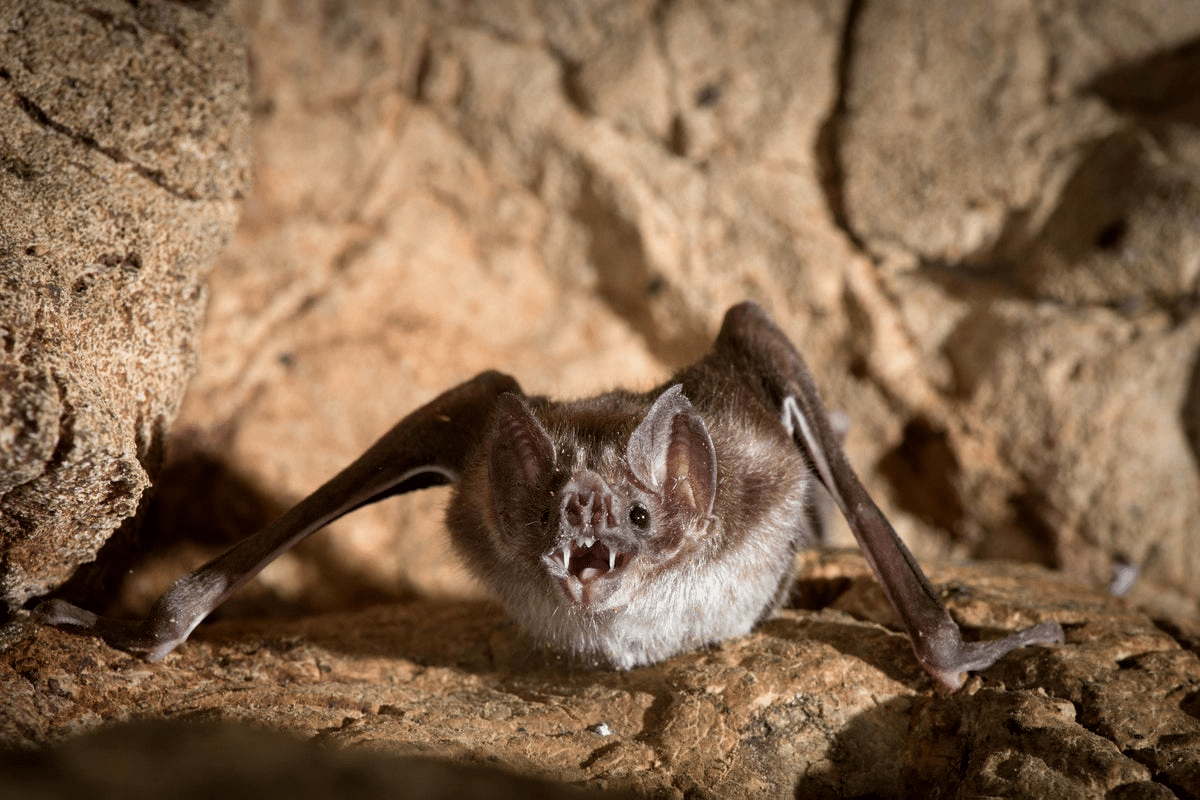
The Vampire Bat has heat sensors on its nose, razor-sharp teeth, and a modified jaw structure for precision cutting.
Unlike most bats, it can walk and jump and produces anticoagulants in its saliva to keep blood flowing.
| Scientific Name | Desmodus rotundus (Common Vampire Bat) |
| Origin | Americas |
| Habitat | Tropical and subtropical regions from Mexico to Argentina |
| Fun Fact | They share food with hungry colony members who fail to find a meal. |
3. Viper
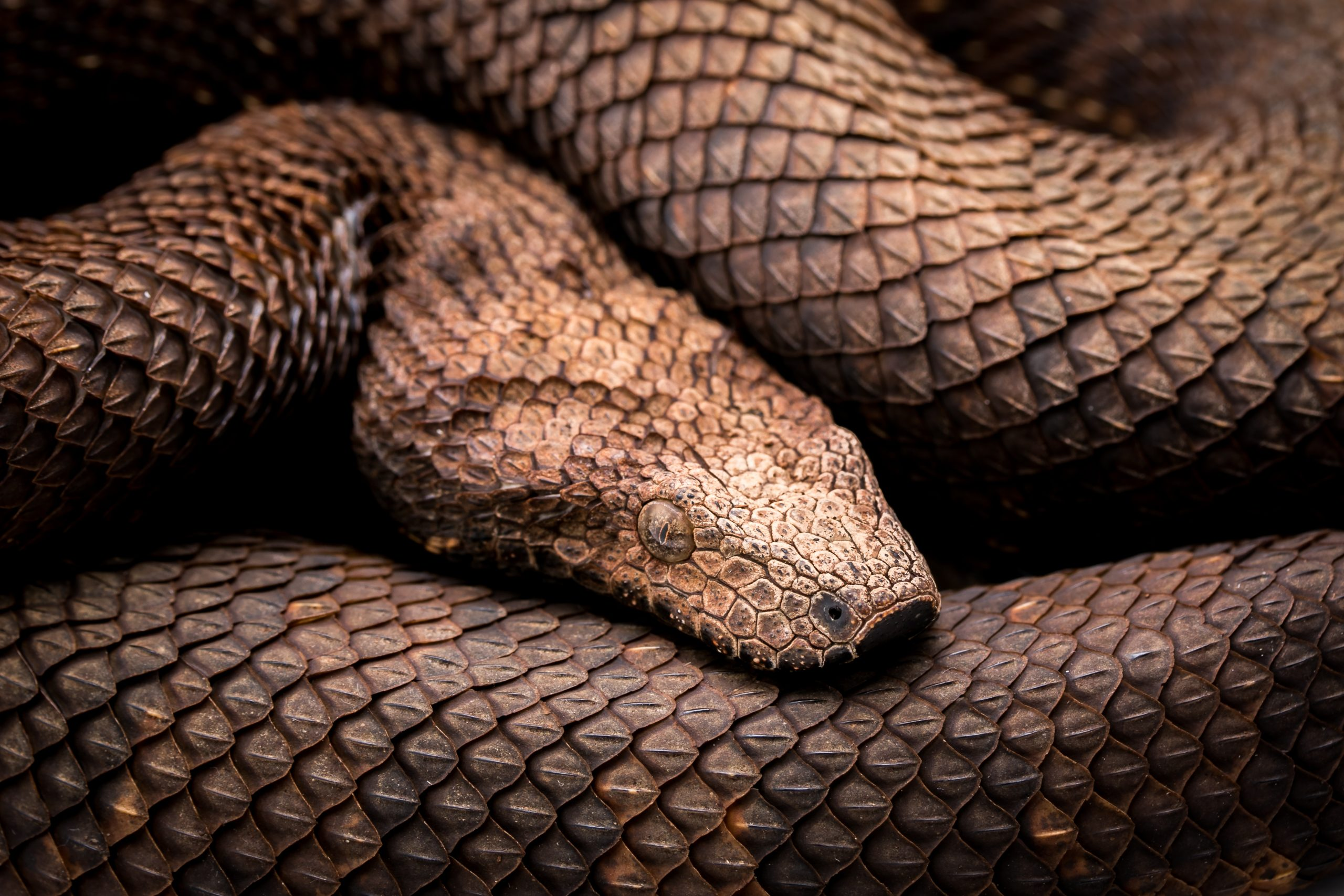
The Viper has a triangular head, vertical pupils, and in many species, heat-sensing pits between eyes and nostrils.
It features folding fangs that rotate forward when striking and specialized venom delivery systems.
| Scientific Name | Various (family Viperidae) |
| Origin | Worldwide except Antarctica and Australia |
| Habitat | Forests to deserts across the Americas, Europe, Africa, and Asia |
| Fun Fact | They can strike at speeds up to 175 mph, faster than humans can blink. |
4. Vicuña
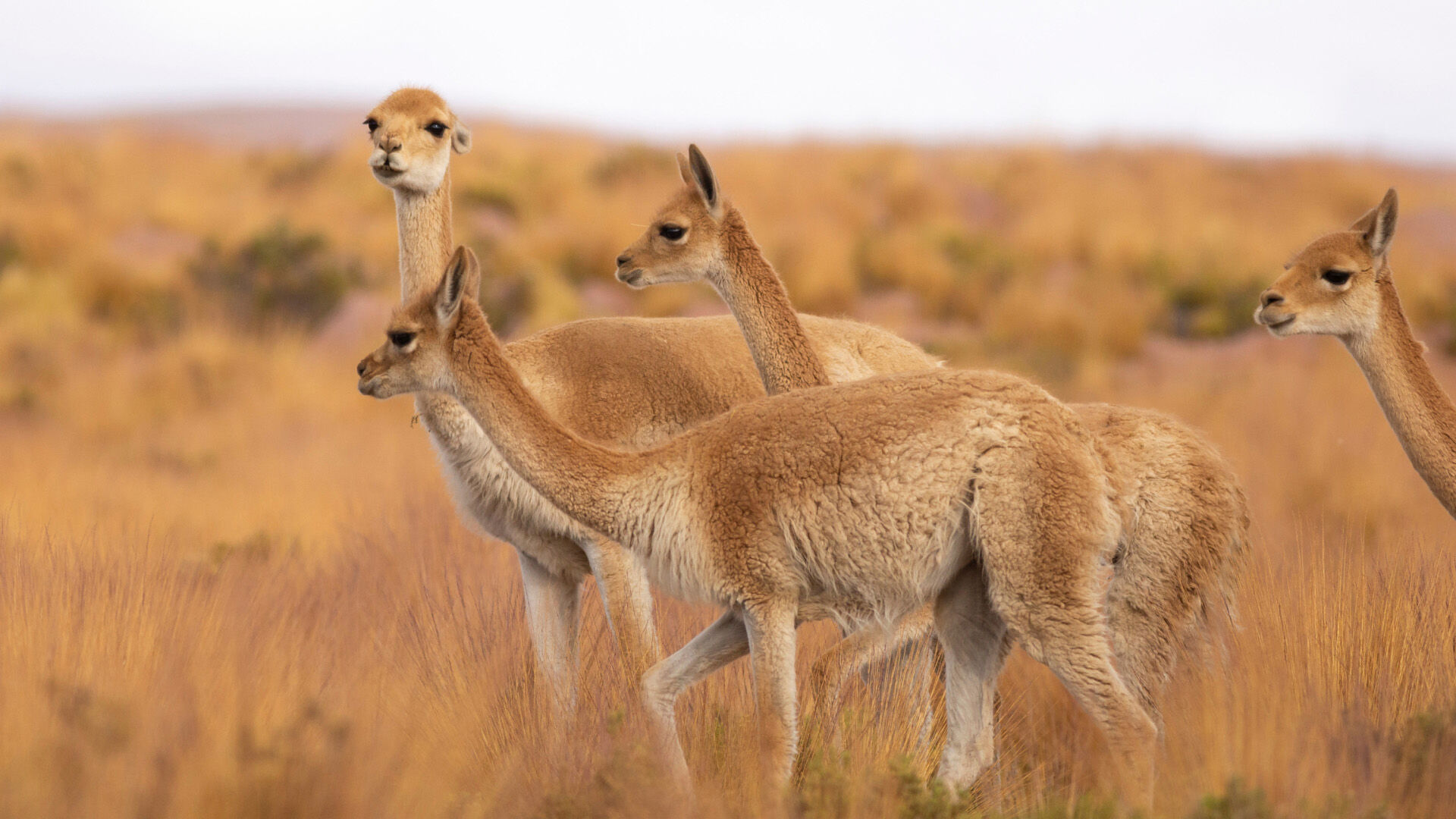
The Vicuña has a slender body, graceful neck, and cinnamon-colored back, and it produces the finest wool of any animal.
It has specialized red blood cells for high-altitude living and complex social structures.
| Scientific Name | Vicugna vicugna |
| Origin | South America |
| Habitat | High Andean plateaus of Peru, Bolivia, Argentina, and Chile |
| Fun Fact | Their wool is so fine that it must be shorn every two years to prevent damage. |
5. Vizsla
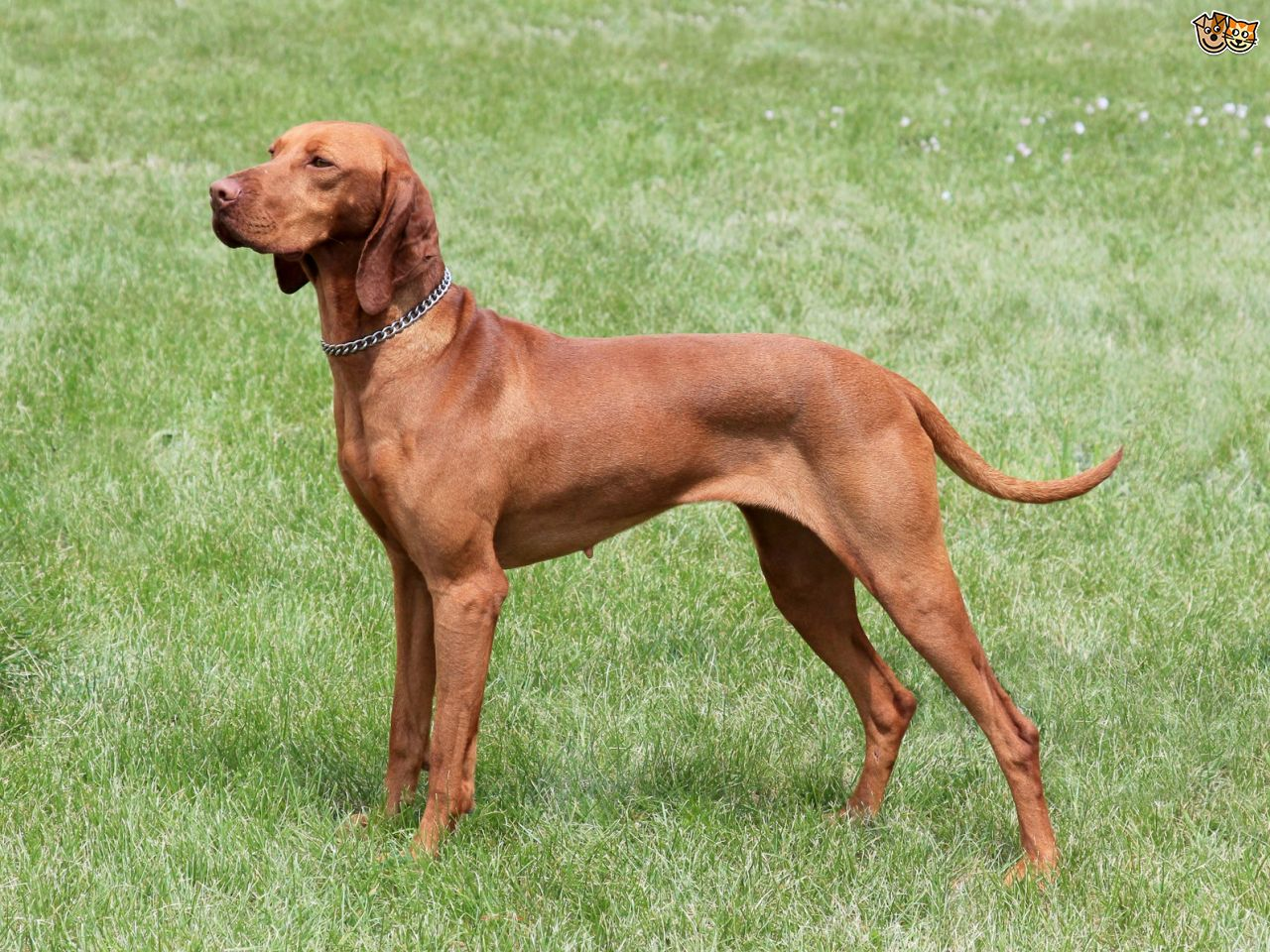
The Vizsla has a lean, muscular body, distinctive golden-rust coat, and sleek appearance with a noble bearing.
It possesses exceptional scenting ability, webbed feet for swimming, and remarkable trainability.
| Scientific Name | Canis lupus familiaris |
| Origin | Hungary |
| Habitat | Domesticated; originally bred for hunting in Hungarian plains |
| Fun Fact | Nearly went extinct during World Wars I and II, saved by smuggling a few dogs out of Hungary. |
6. Velvet Worm
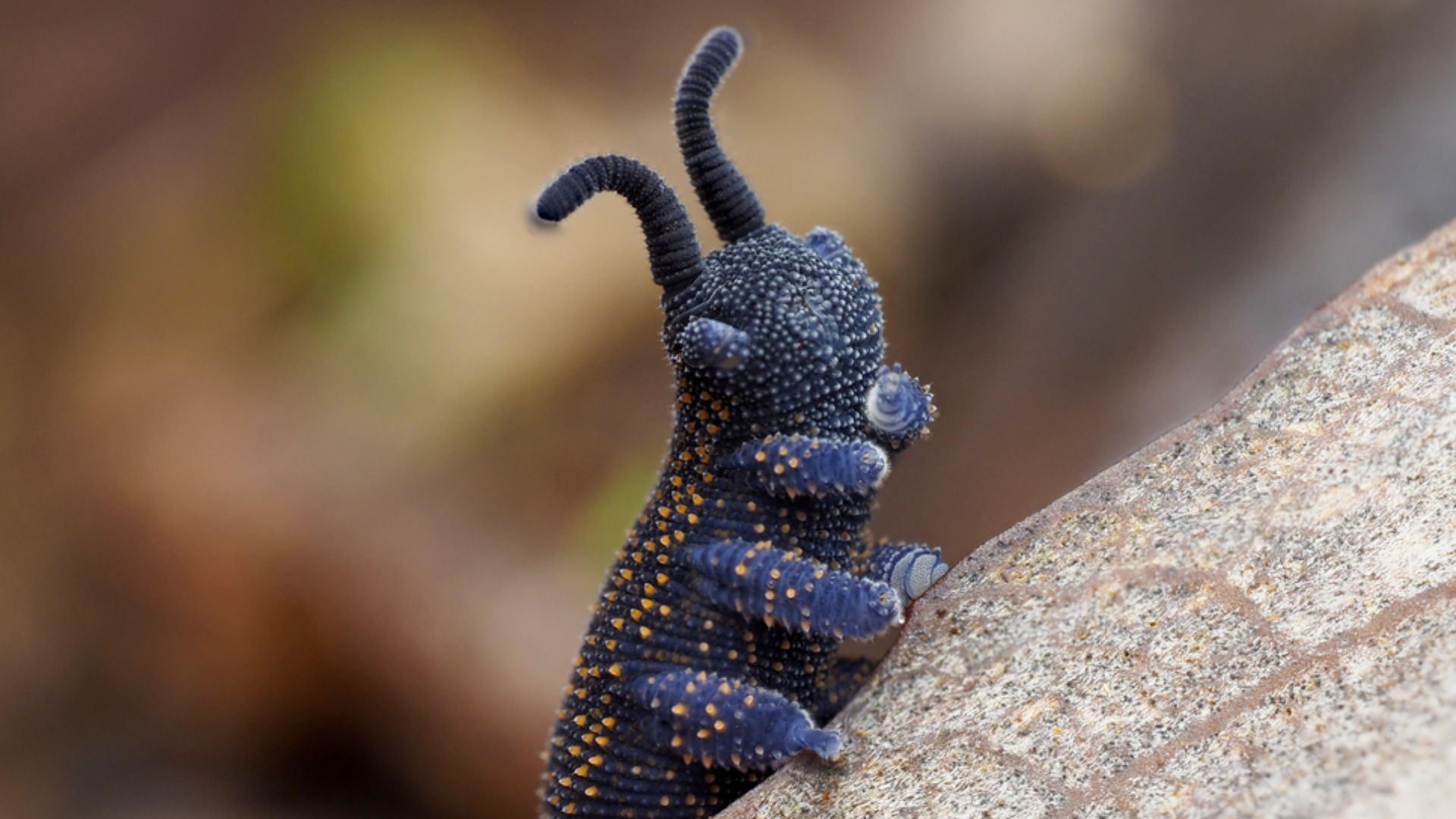
The Velvet Worm has a soft, velvety body with multiple pairs of stubby legs and two antennae on its head.
It hunts by spraying sticky slime from specialized glands to immobilize prey.
| Scientific Name | Onychophora (phylum) |
| Origin | Ancient lineage dating back over 500 million years |
| Habitat | Humid forests in tropical and temperate regions worldwide |
| Fun Fact | They’re considered “living fossils” that have changed little in over 300 million years. |
7. Vervet Monkey
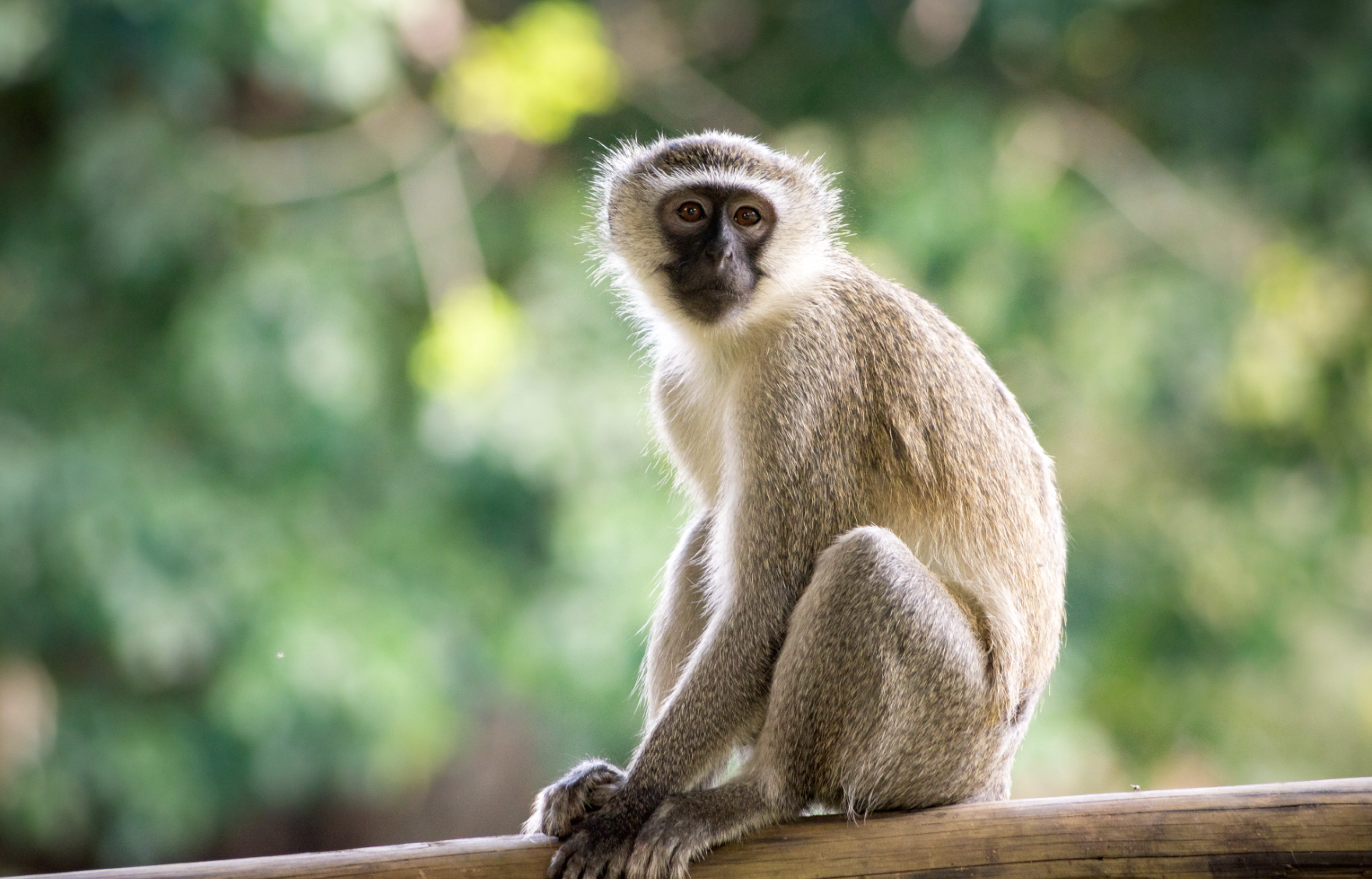
The Vervet Monkey has grayish fur, a black face with a white fringe, and distinctive blue male genitalia.
It possesses complex vocalizations that include specific alarm calls for different predator types.
| Scientific Name | Chlorocebus pygerythrus |
| Origin | Africa |
| Habitat | Savannas and woodlands of eastern and southern Africa |
| Fun Fact | They have different alarm calls for eagles, snakes, and leopards, teaching young to recognize specific threats. |
8. Vaquita
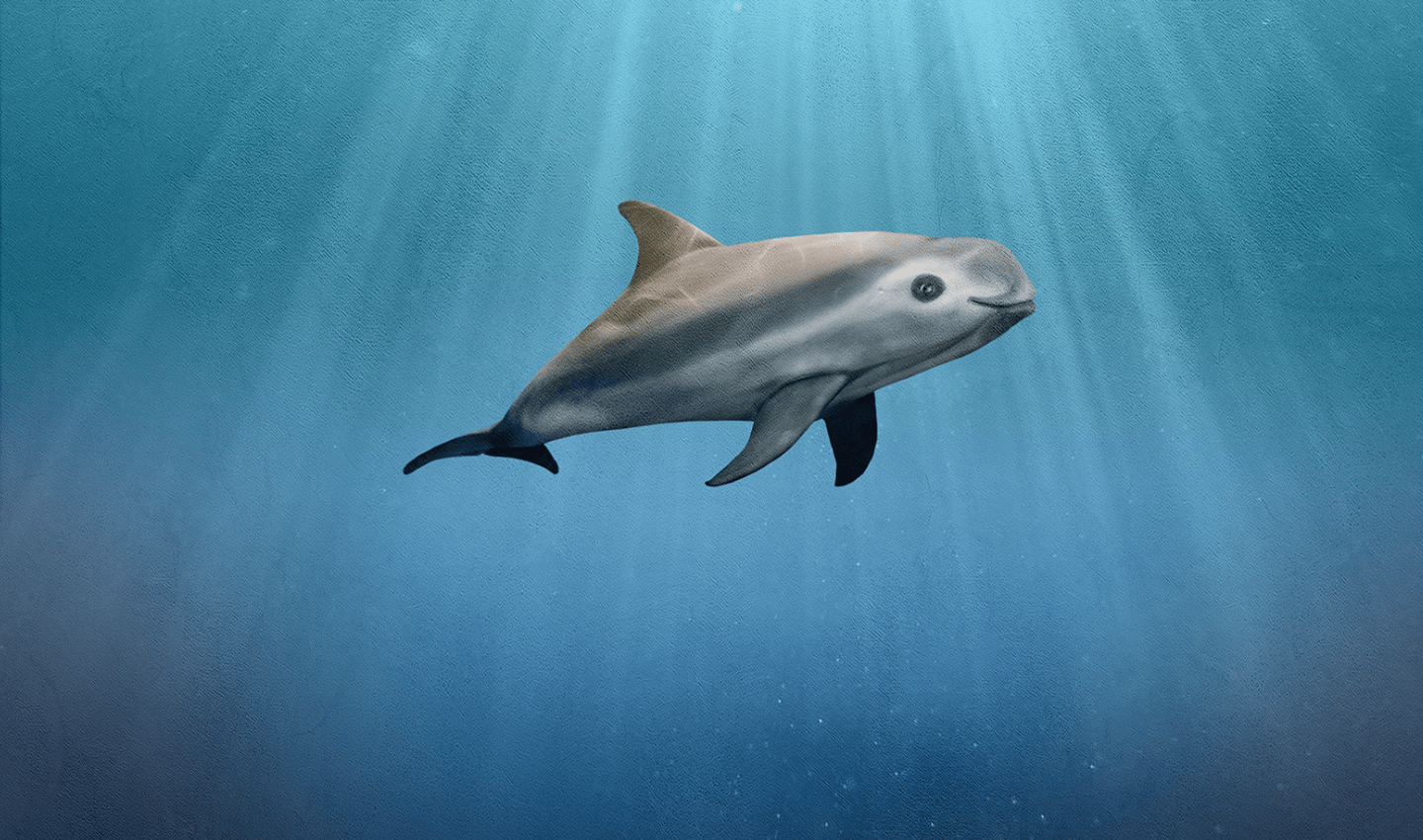
The Vaquita is a tiny porpoise with dark rings around its eyes, dark patches on its lips, and a proportionally large dorsal fin.
It’s the smallest and most endangered cetacean in the world.
| Scientific Name | Phocoena sinus |
| Origin | Mexico |
| Habitat | Northern Gulf of California, Mexico |
| Fun Fact | Fewer than 10 individuals remain, making it the most endangered marine mammal on Earth. |
9. Vine Snake
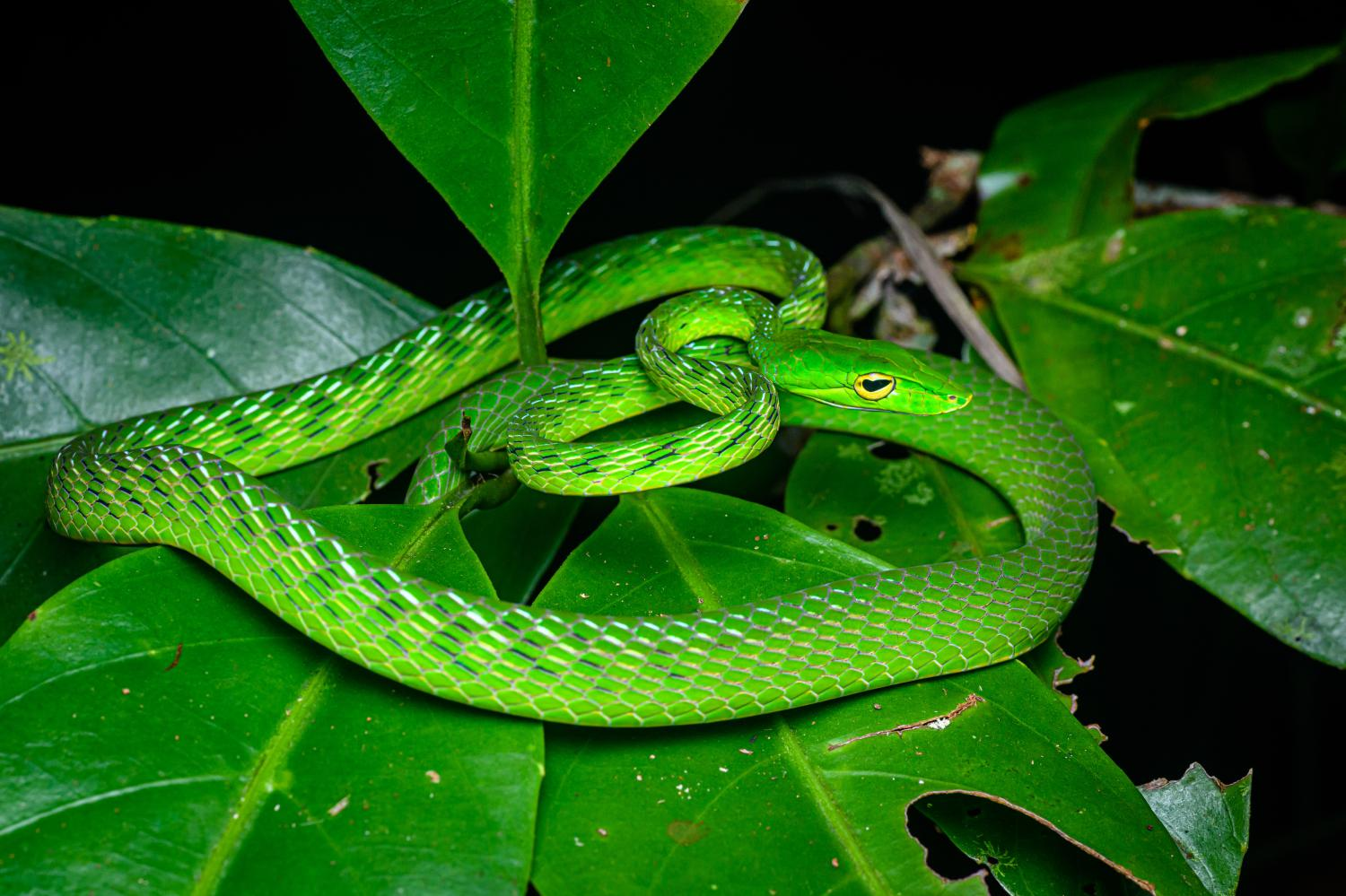
The Vine Snake has an extremely slender body, pointed head, and horizontal pupil in a large, almond-shaped eye.
It’s perfectly camouflaged to resemble vines or branches in its forest habitat.
| Scientific Name | Ahaetulla species |
| Origin | Asia and Americas (different genera) |
| Habitat | Tropical forests of South/Southeast Asia and Central/South America |
| Fun Fact | They can extend the front part of their body straight out, holding perfectly still to mimic twigs. |
10. Vole
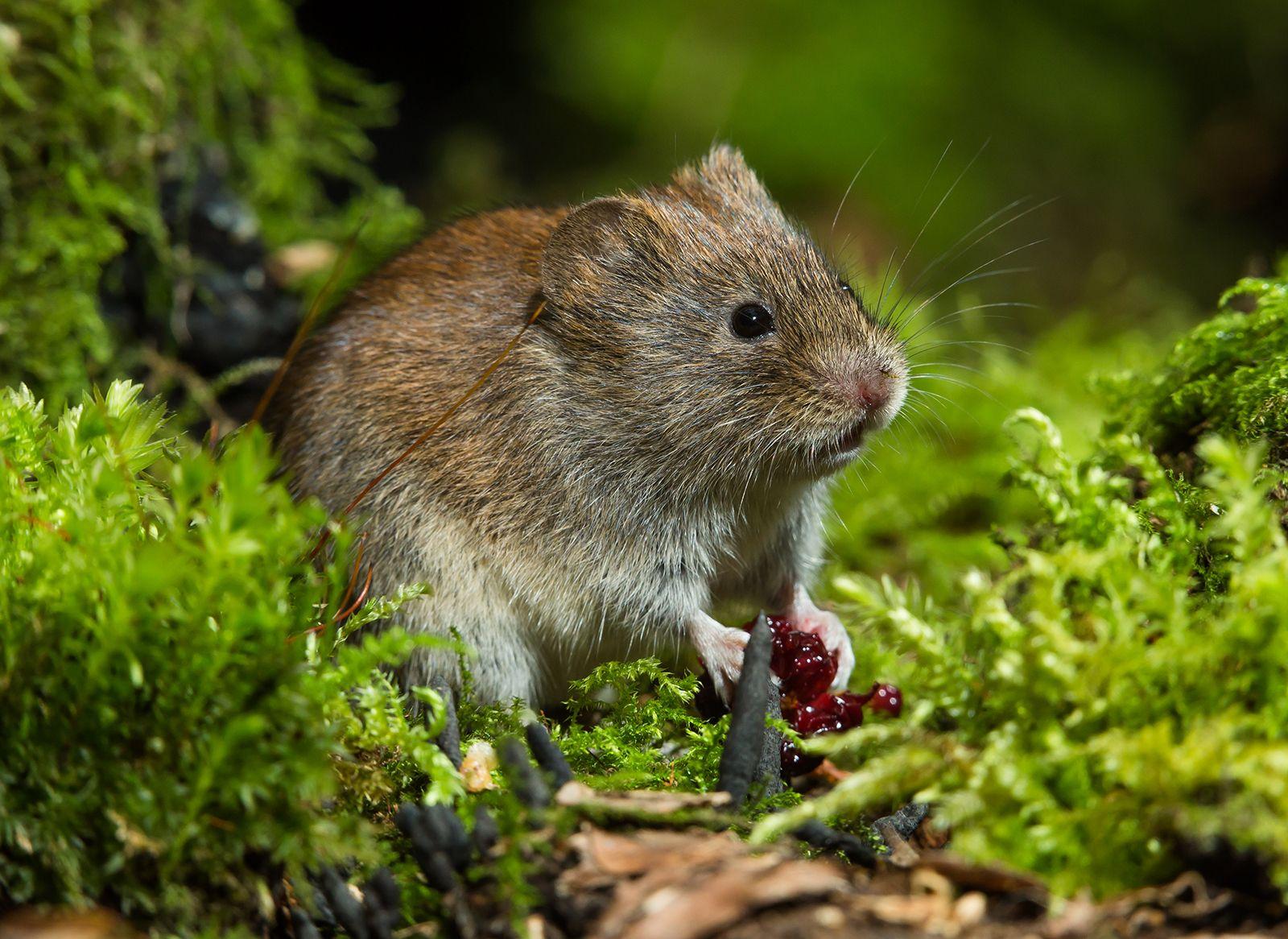
The Vole has a stout body, rounded snout, small ears partially hidden in fur, and short tail.
It creates extensive tunnel systems with separate chambers for nesting, food storage, and waste.
| Scientific Name | Microtus species |
| Origin | Northern Hemisphere |
| Habitat | Grasslands, woodlands, and tundra across North America, Europe, and Asia |
| Fun Fact | Some species form monogamous pairs, rare among mammals, with males helping care for offspring. |
11. Violet-backed Starling
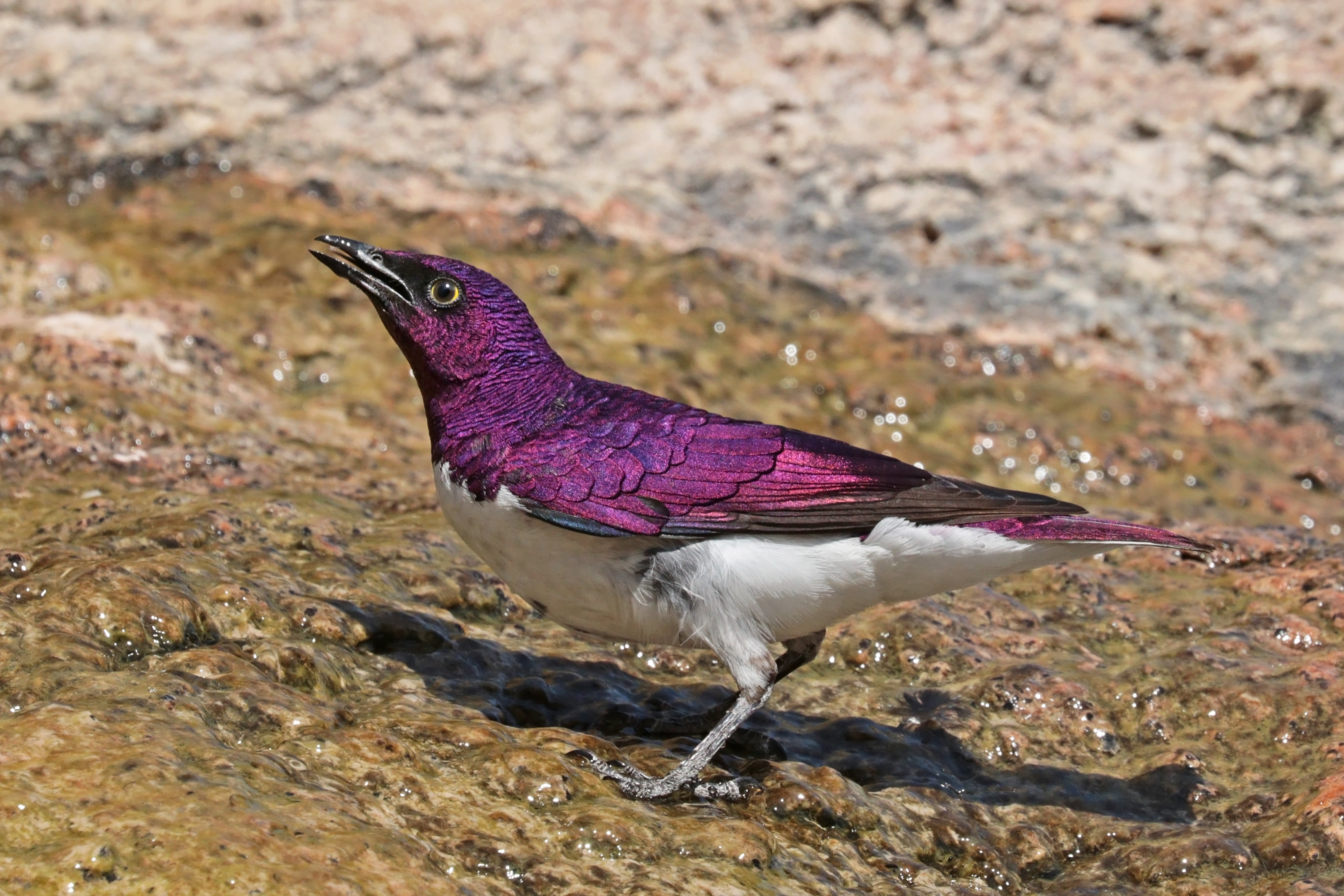
The Violet-backed Starling has stunning sexually dimorphic plumage: males with iridescent violet back and white underparts, females with brown streaking.
It has a melodious whistling song and strong, direct flight.
| Scientific Name | Cinnyricinclus leucogaster |
| Origin | Africa |
| Habitat | Woodlands and savannas across sub-Saharan Africa |
| Fun Fact | Males’ vibrant color comes from unique feather structure that refracts light, not from pigment. |
12. Vietnamese Pot-bellied Pig
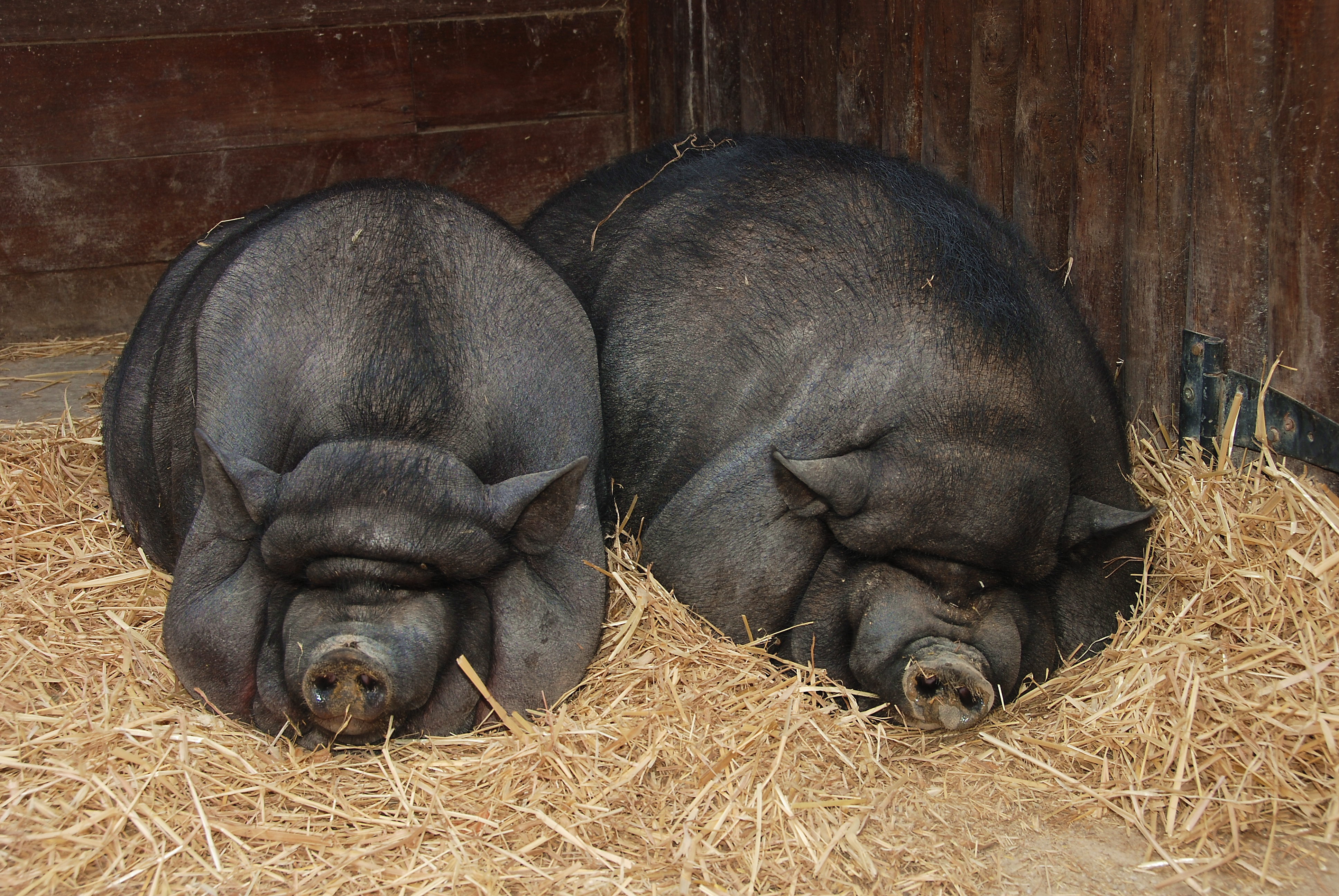
The Vietnamese Pot-bellied Pig has a distinctive swayed back, pot belly, and small size compared to farm pigs.
It’s highly intelligent with problem-solving abilities comparable to a 3-year-old child.
| Scientific Name | Sus scrofa domesticus |
| Origin | Vietnam |
| Habitat | Domesticated; originally from villages in Vietnam’s highlands |
| Fun Fact | They can learn their names, come when called, and be house-trained like dogs. |
13. Vlamingii Tang
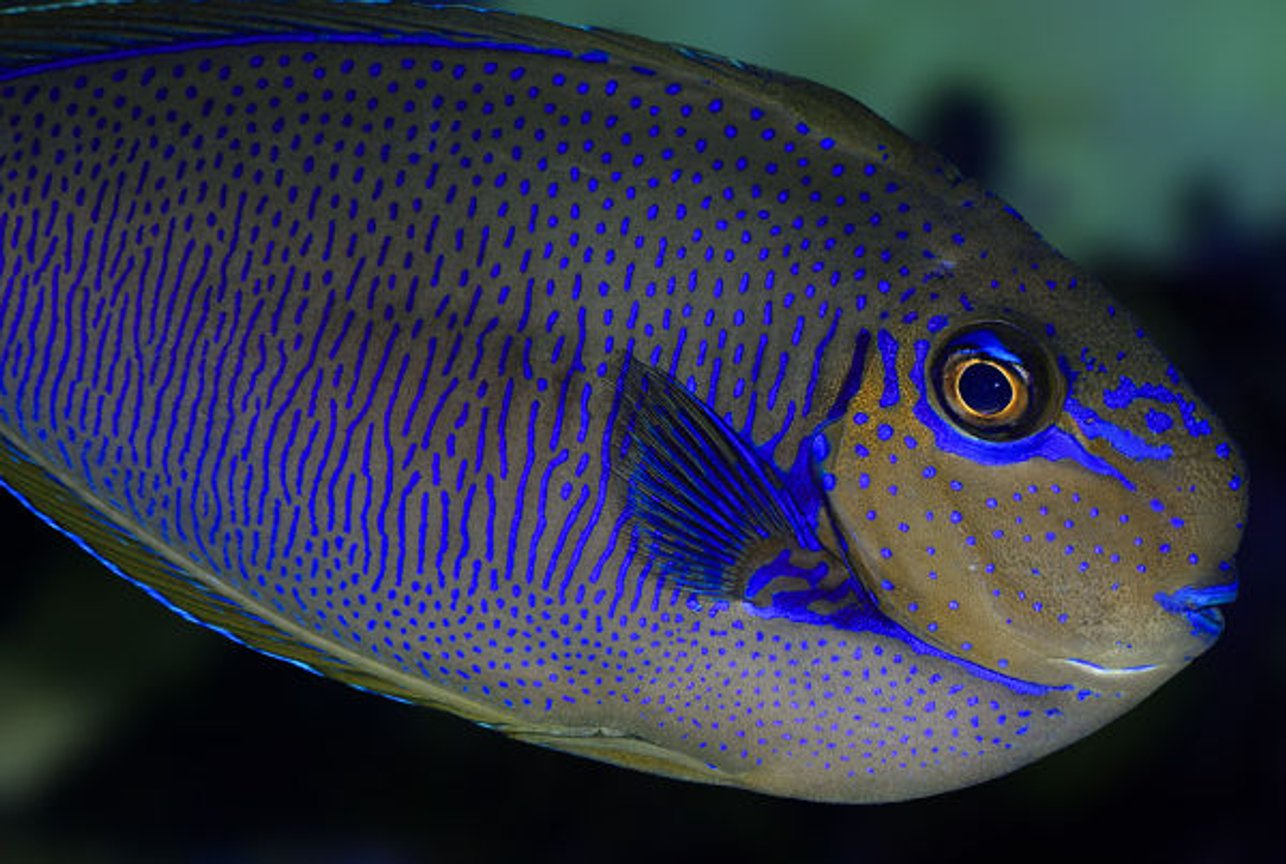
The Vlamingii Tang has a compressed, oval body with bright coloration: yellow with blue spots and purple fins.
It has a retractable spine near its tail used for defense against predators.
| Scientific Name | Naso vlamingii |
| Origin | Indo-Pacific region |
| Habitat | Coral reefs and lagoons across the tropical Pacific and Indian Oceans |
| Fun Fact | They can rapidly change their color patterns based on mood, health, and social status. |
14. Variegated Squirrel
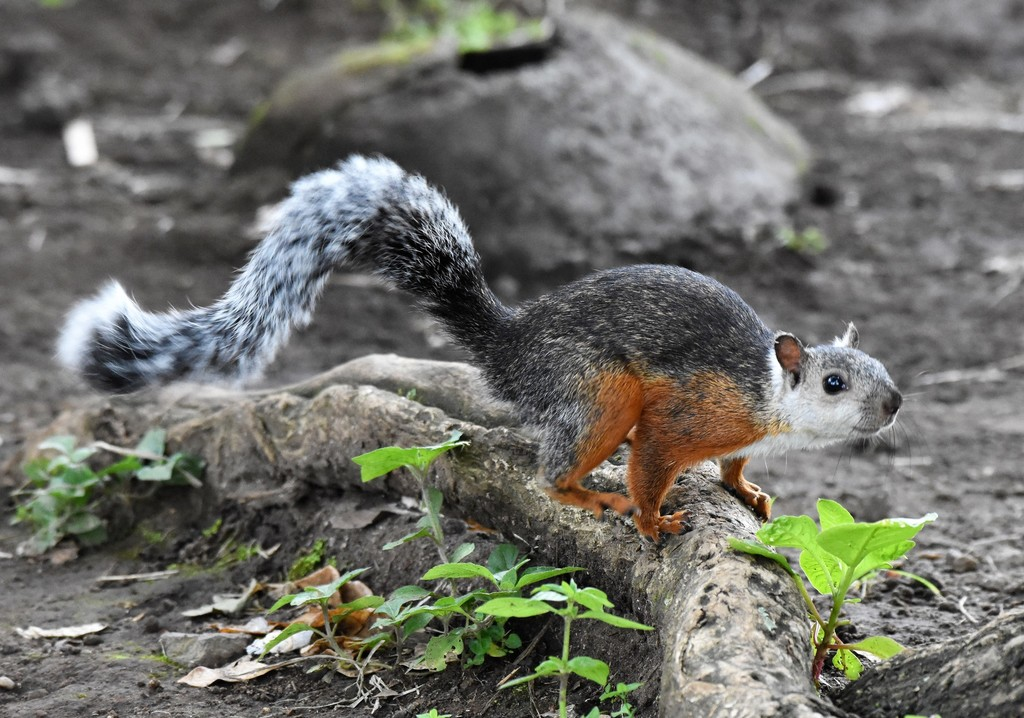
The Variegated Squirrel has multicolored fur in combinations of gray, brown, black, and white, and it has a long, bushy tail for balance.
It has exceptional dexterity and can rotate its ankles 180 degrees to descend trees headfirst.
| Scientific Name | Sciurus variegatoides |
| Origin | Central America |
| Habitat | Tropical forests from southern Mexico to Panama |
| Fun Fact | They’re known to raid bird nests for eggs, despite being primarily vegetarian. |
15. Velvet Scoter
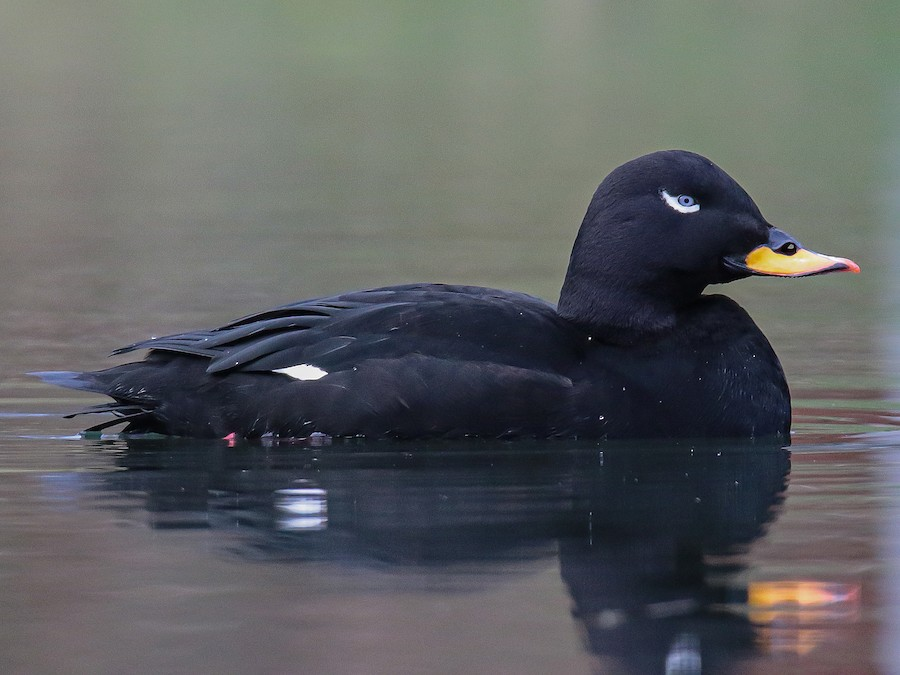
The Velvet Scoter is a large sea duck with males having velvety black plumage, white eye patches, and an orange-tipped bill.
It’s an exceptional diver, using its wings to “fly” underwater while foraging.
| Scientific Name | Melanitta fusca |
| Origin | Northern Europe and Asia |
| Habitat | Coastal waters and large inland lakes across northern Eurasia |
| Fun Fact | They can dive to depths of 30 meters and stay underwater for up to a minute when hunting. |
16. Virgin Islands Boa
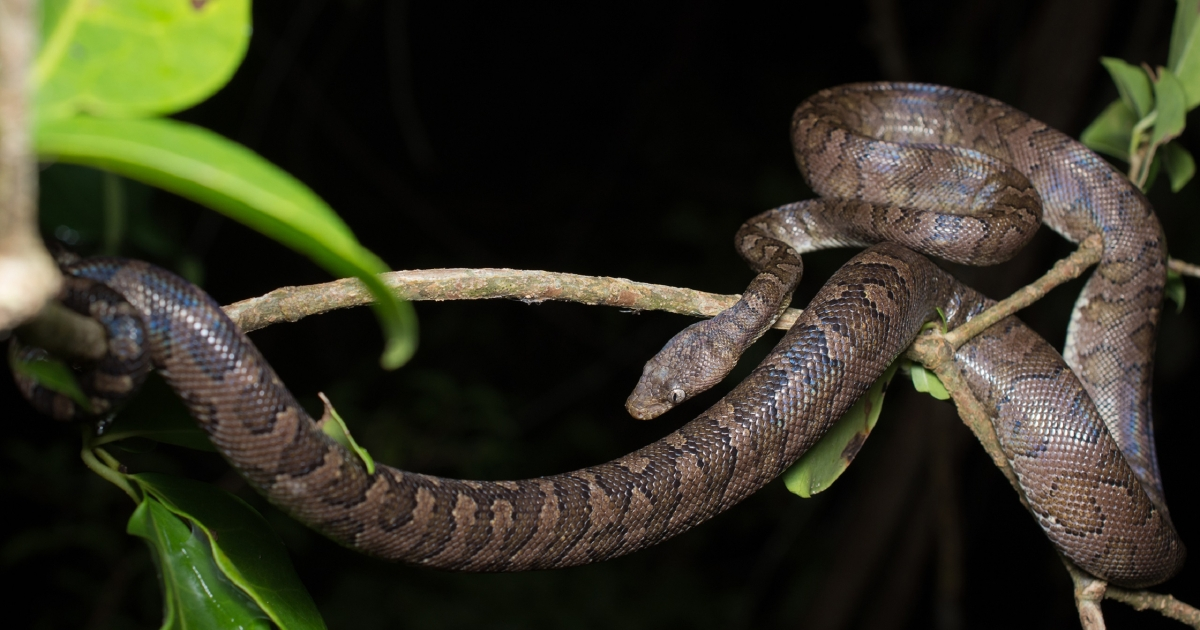
The Virgin Islands Boa has a slender body with gray-brown coloration and subtle dark blotches that provide camouflage on tree bark.
It’s primarily arboreal with excellent climbing abilities and constricts small prey.
| Scientific Name | Chilabothrus granti |
| Origin | Caribbean |
| Habitat | Dry forests and woodland areas of the Virgin Islands |
| Fun Fact | This endangered snake was once thought extinct until rediscovered in the 1970s. |
17. Vinegaroon
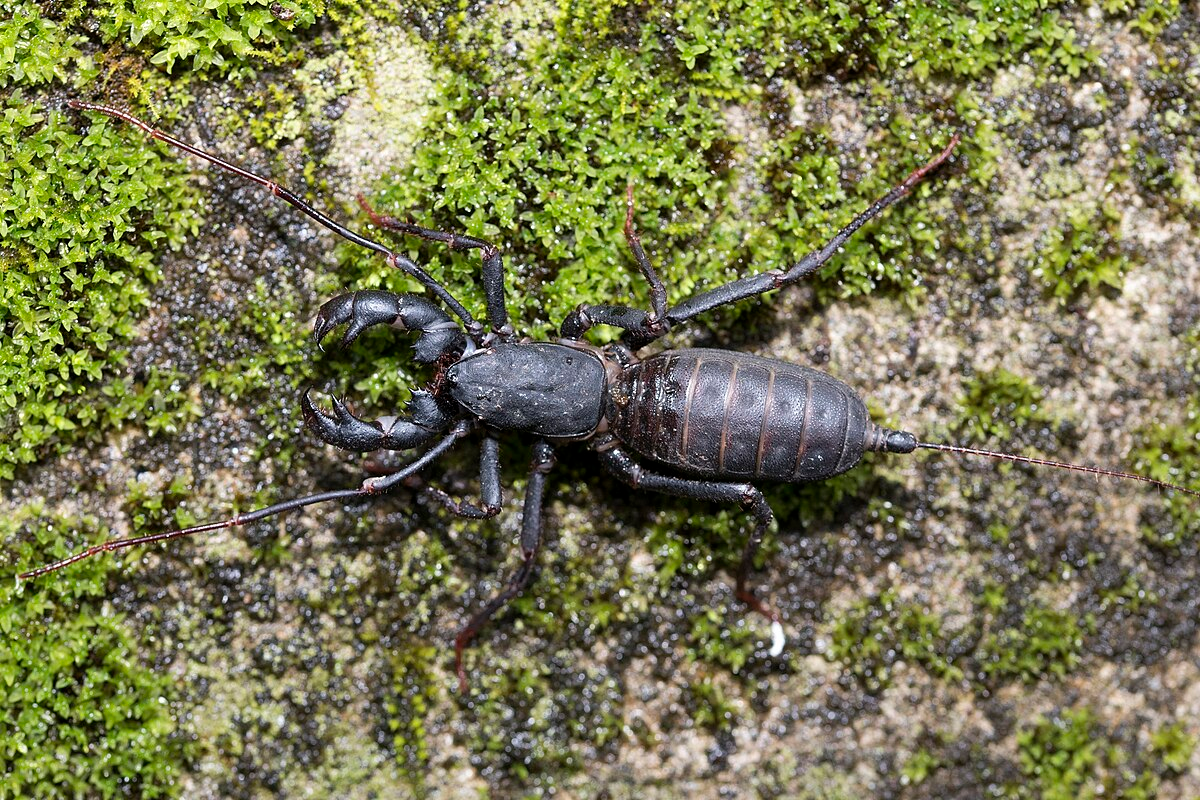
The Vinegaroon has a scorpion-like appearance with large front pincers, whip-like tail, and eight legs with the front pair modified as sensory appendages.
It sprays acetic acid (vinegar) from its tail when threatened, giving it its common name.
| Scientific Name | Mastigoproctus giganteus |
| Origin | Americas |
| Habitat | Arid and semi-arid regions from southern United States to Brazil |
| Fun Fact | Despite their fearsome appearance, they’re harmless to humans beyond their vinegar-like spray. |
18. Virginia Opossum
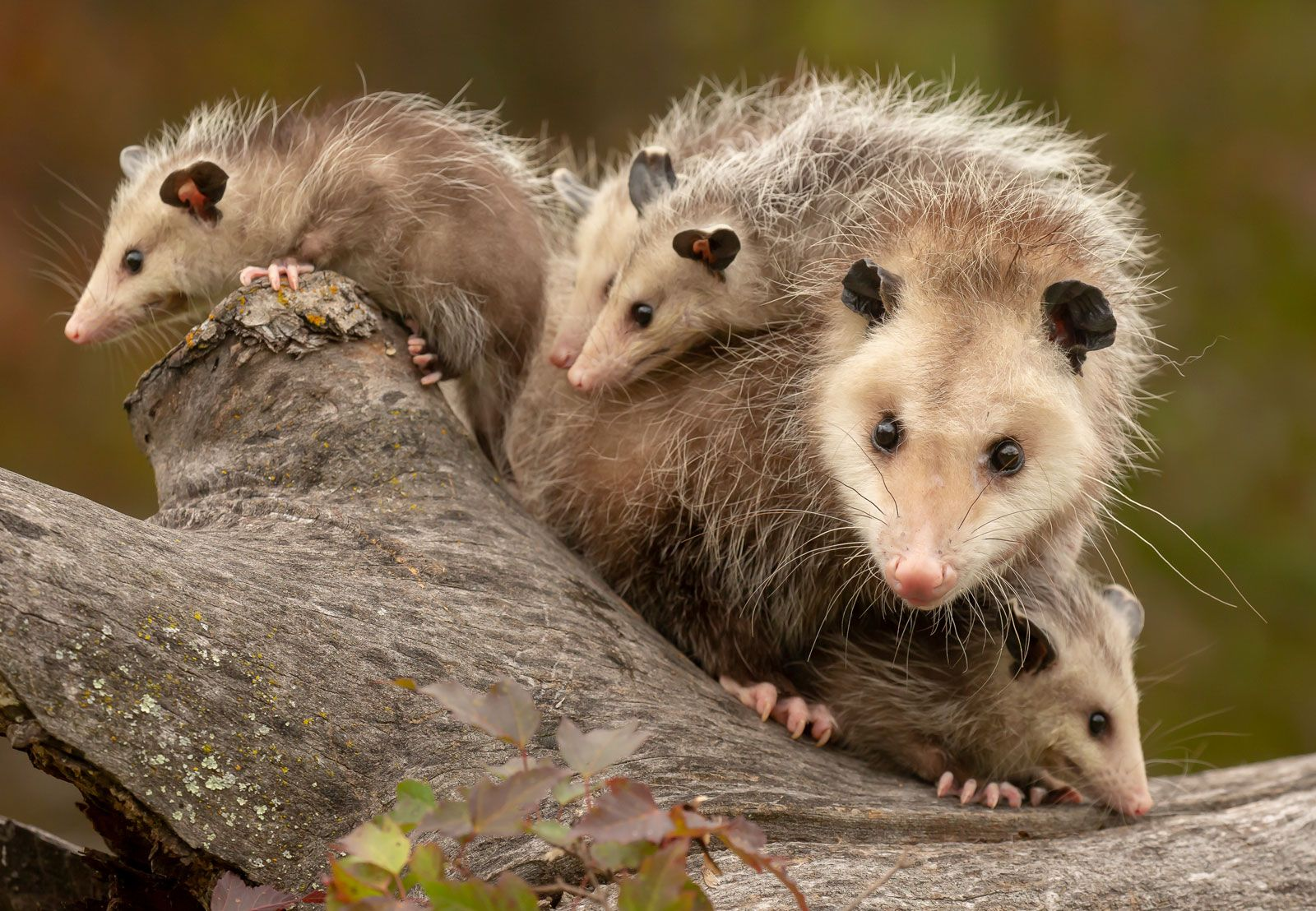
The Virginia Opossum has a pointed face, naked ears, grayish fur, and a prehensile tail used for balance and carrying nesting materials.
It’s North America’s only marsupial, with females carrying young in a pouch.
| Scientific Name | Didelphis virginiana |
| Origin | North America |
| Habitat | Woodlands, farmland, and suburbs across eastern and central United States |
| Fun Fact | They’re immune to most snake venom and rarely contract rabies due to their low body temperature. |
19. Volcano Rabbit
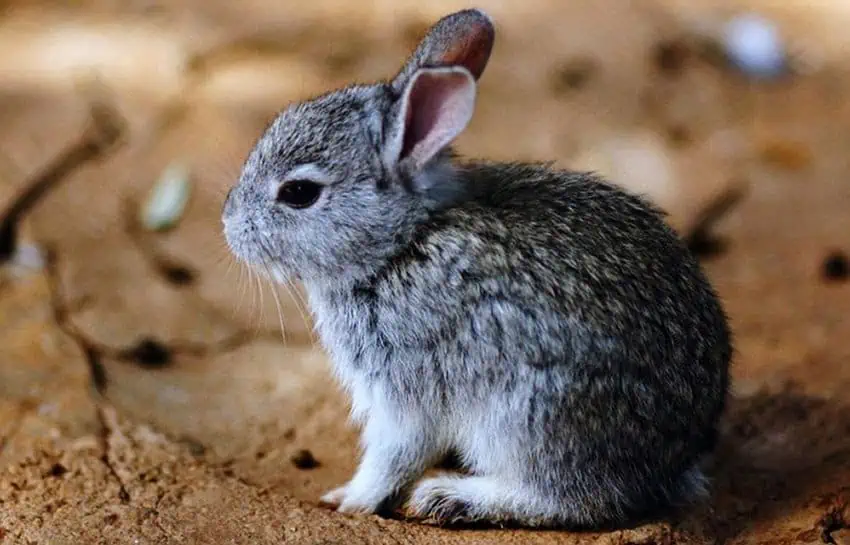
The Volcano Rabbit is one of the world’s smallest rabbits with short ears, dark fur, and a tiny tail barely visible against its body.
It has specialized adaptations for high-altitude living in volcanic soil.
| Scientific Name | Romerolagus diazi |
| Origin | Mexico |
| Habitat | Alpine grasslands near volcanoes surrounding Mexico City |
| Fun Fact | Unlike most rabbits, they can vocalize with high-pitched squeaks to communicate with each other. |
20. Vaux’s Swift
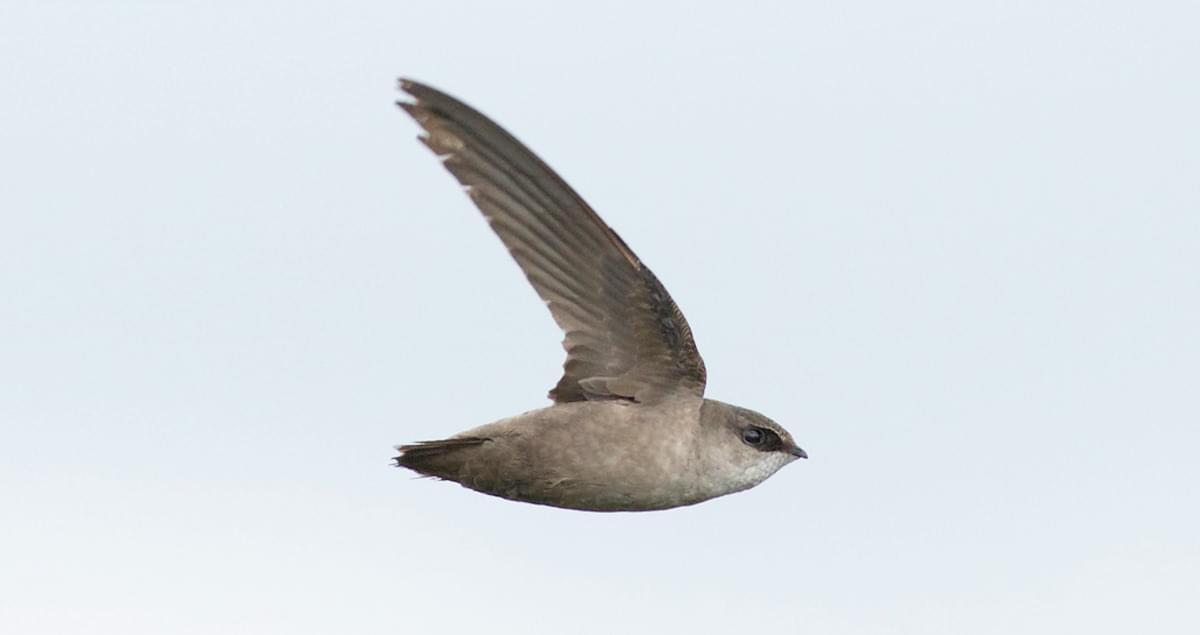
The Vaux’s Swift has a cigar-shaped body with long, narrow wings, sooty-gray plumage, and a short, squared tail.
It spends almost its entire life airborne, even sleeping while flying, and uses specialized foot structures to cling vertically to the inside of hollow trees and chimneys.
| Scientific Name | Chaetura vauxi |
|---|---|
| Origin | North and Central America |
| Habitat | Forests and urban areas from Alaska to Honduras, often nesting in chimneys or hollow trees |
| Fun Fact | These birds can’t perch like other birds but instead use their claws to hang vertically on rough surfaces. |
21. Vampire Squid
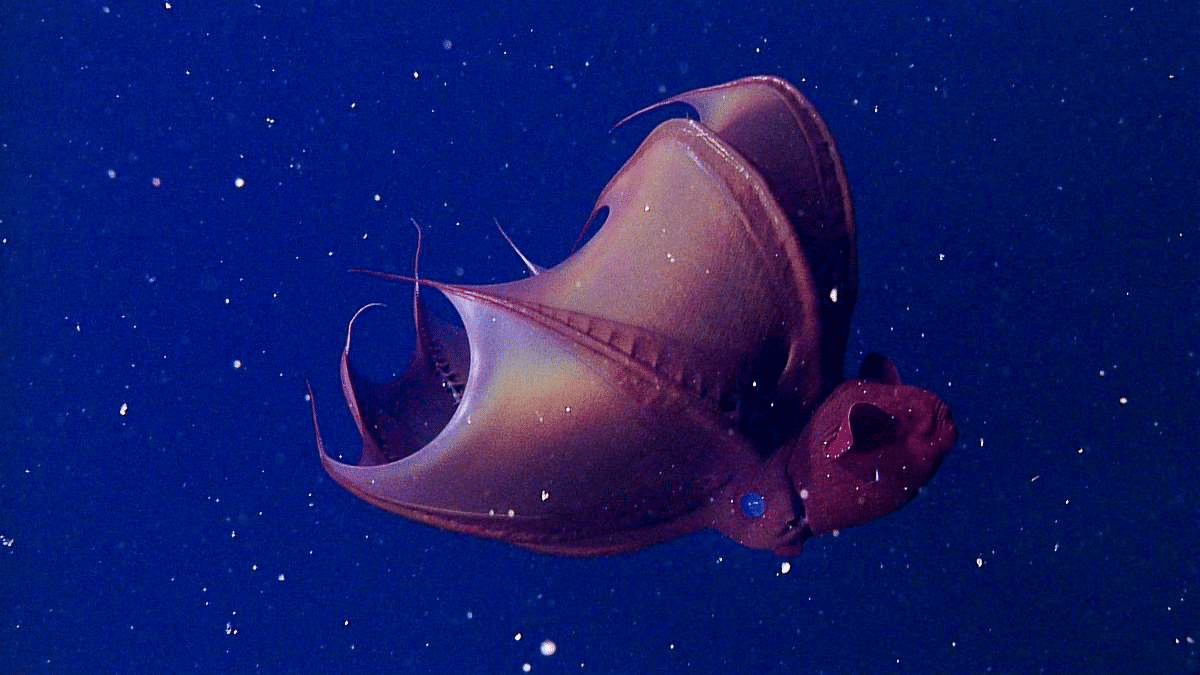
The Vampire Squid has a deep red to black coloration, cloak-like webbing between its arms, and bioluminescent organs covering its body.
It can turn its entire body inside out when threatened, revealing spiny projections.
| Scientific Name | Vampyroteuthis infernalis |
| Origin | Global oceans |
| Habitat | Extreme deep-sea environments with little to no oxygen |
| Fun Fact | Despite its name, it doesn’t suck blood but feeds on marine snow using two retractile filaments. |
22. Violet Turaco
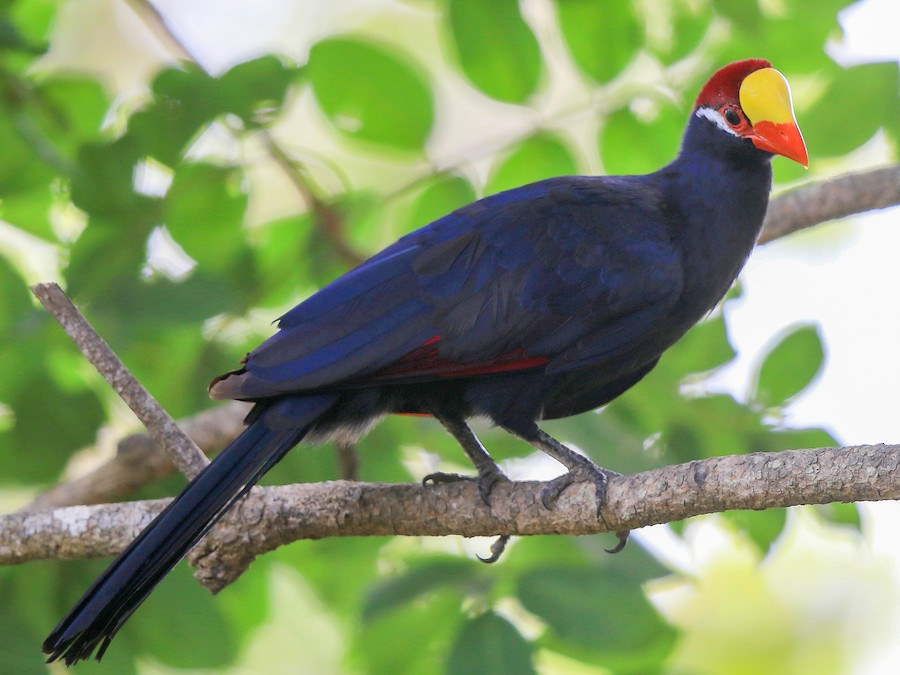
The Violet Turaco has stunning plumage with the deep violet-blue body, yellow forehead, and crimson flight feathers visible when flying.
It has a distinctive crest, a unique foot structure with two toes pointing forward and two backward, and loud calls.
| Scientific Name | Musophaga violacea |
| Origin | Africa |
| Habitat | Forests and woodlands across western Africa |
| Fun Fact | Their red wing pigment contains copper and is one of the only true red pigments in birds. |
23. Varied Bunting
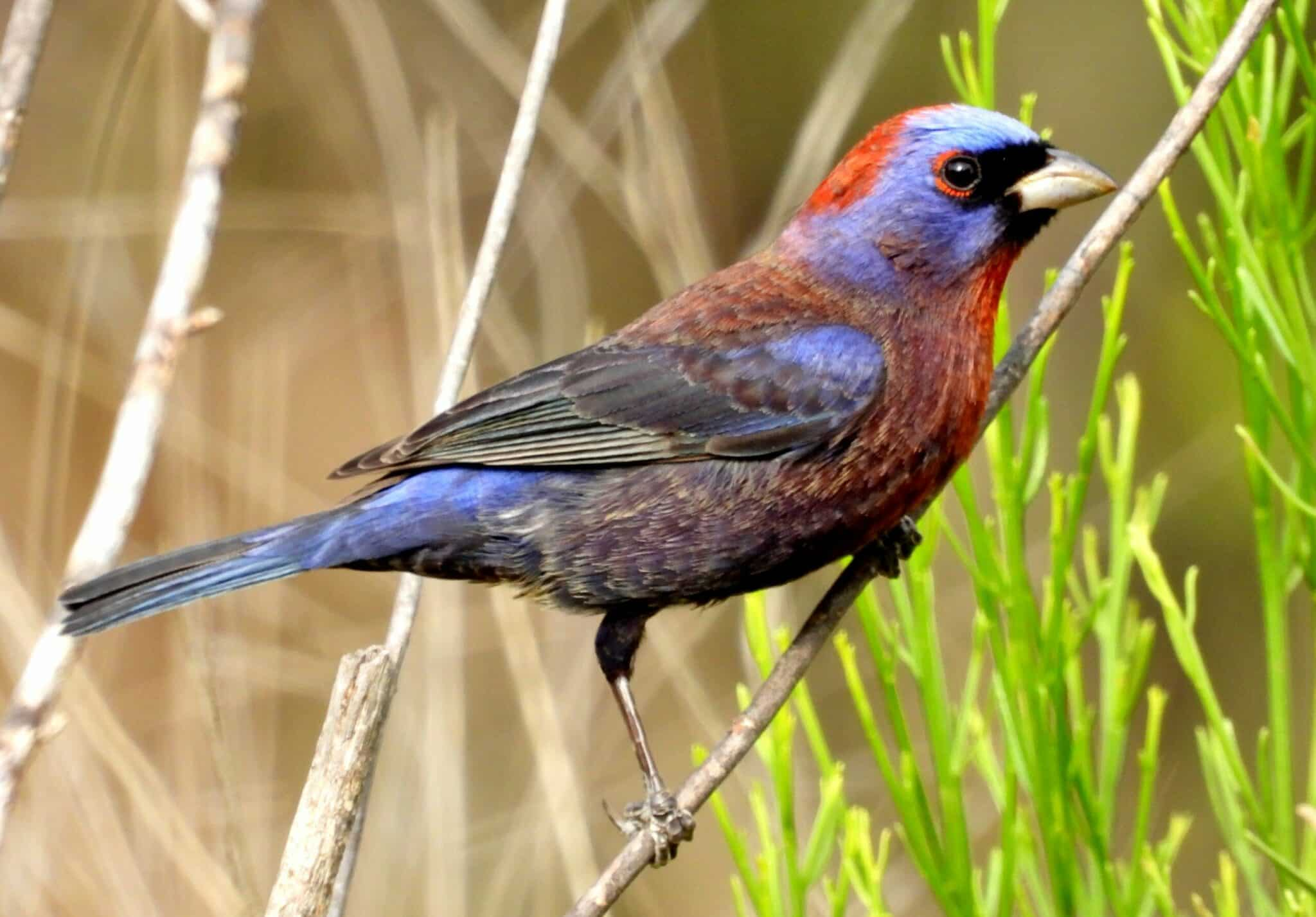
The Varied Bunting has a striking appearance. Males display a rich purple-blue head, red nape, and rusty belly, while females are brownish-gray.
It has a short, thick bill adapted for cracking seeds and builds neatly woven cup-shaped nests in thorny shrubs.
| Scientific Name | Passerina versicolor |
|---|---|
| Origin | North America |
| Habitat | Arid brushlands and desert washes of the southwestern United States and Mexico |
| Fun Fact | Males change color with light angle due to microscopic structures in their feathers rather than pigment. |
24. Variable Hawk
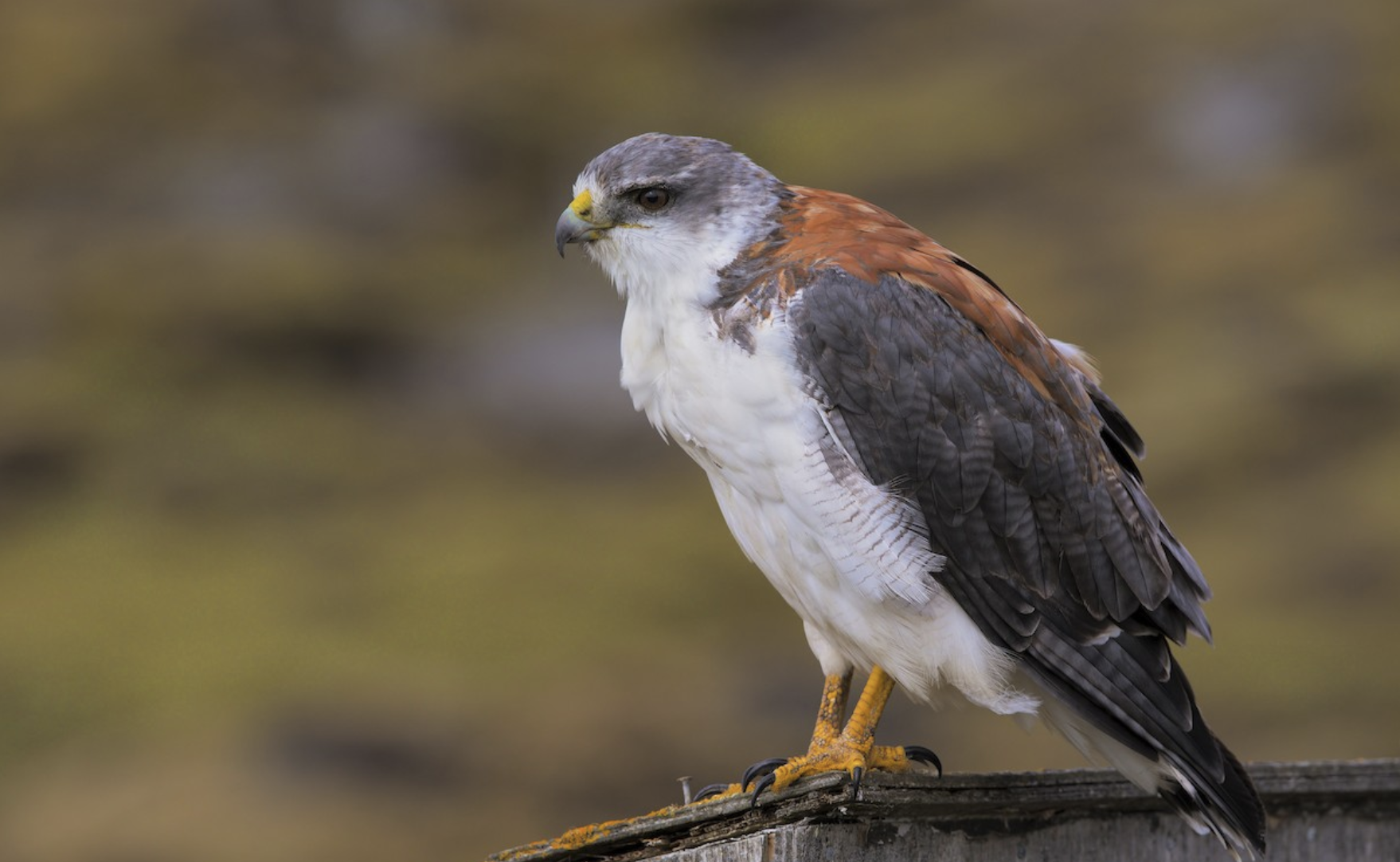
The Variable Hawk shows remarkable color variation ranging from dark brown to nearly white depending on region and individual.
It has broad wings, a relatively short tail, and powerful talons for capturing prey.
| Scientific Name | Geranoaetus polyosoma |
| Origin | South America |
| Habitat | Mountains, grasslands, and scrublands throughout the Andes and Patagonia |
| Fun Fact | Its plumage is so variable that scientists once thought it was several different species. |
25. Velvet Ant
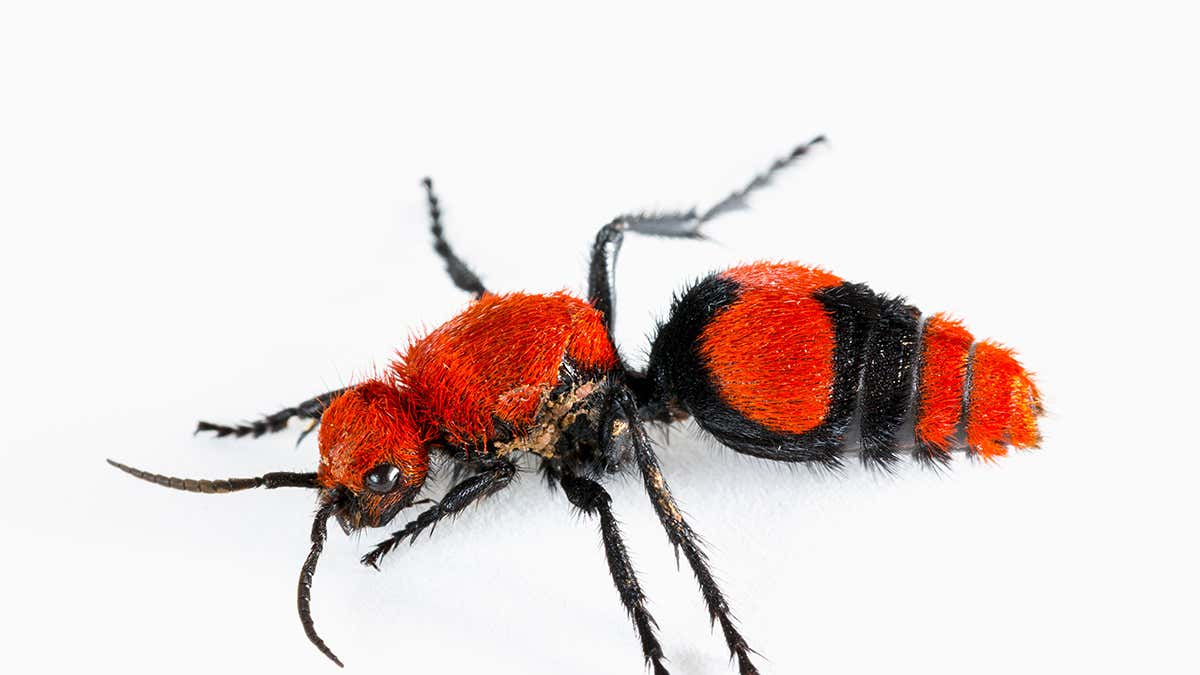
The Velvet Ant is actually a wingless female wasp covered in dense, brightly colored hair, often in warning colors of red or orange.
It possesses one of the most painful insect stings, earning the nickname “cow killer.”
| Scientific Name | Mutillidae family |
| Origin | Worldwide |
| Habitat | Open, sandy areas in tropical to temperate regions worldwide |
| Fun Fact | Their exoskeleton is so tough it can withstand being stepped on by a human. |
26. Vietnamese Longnose Snake
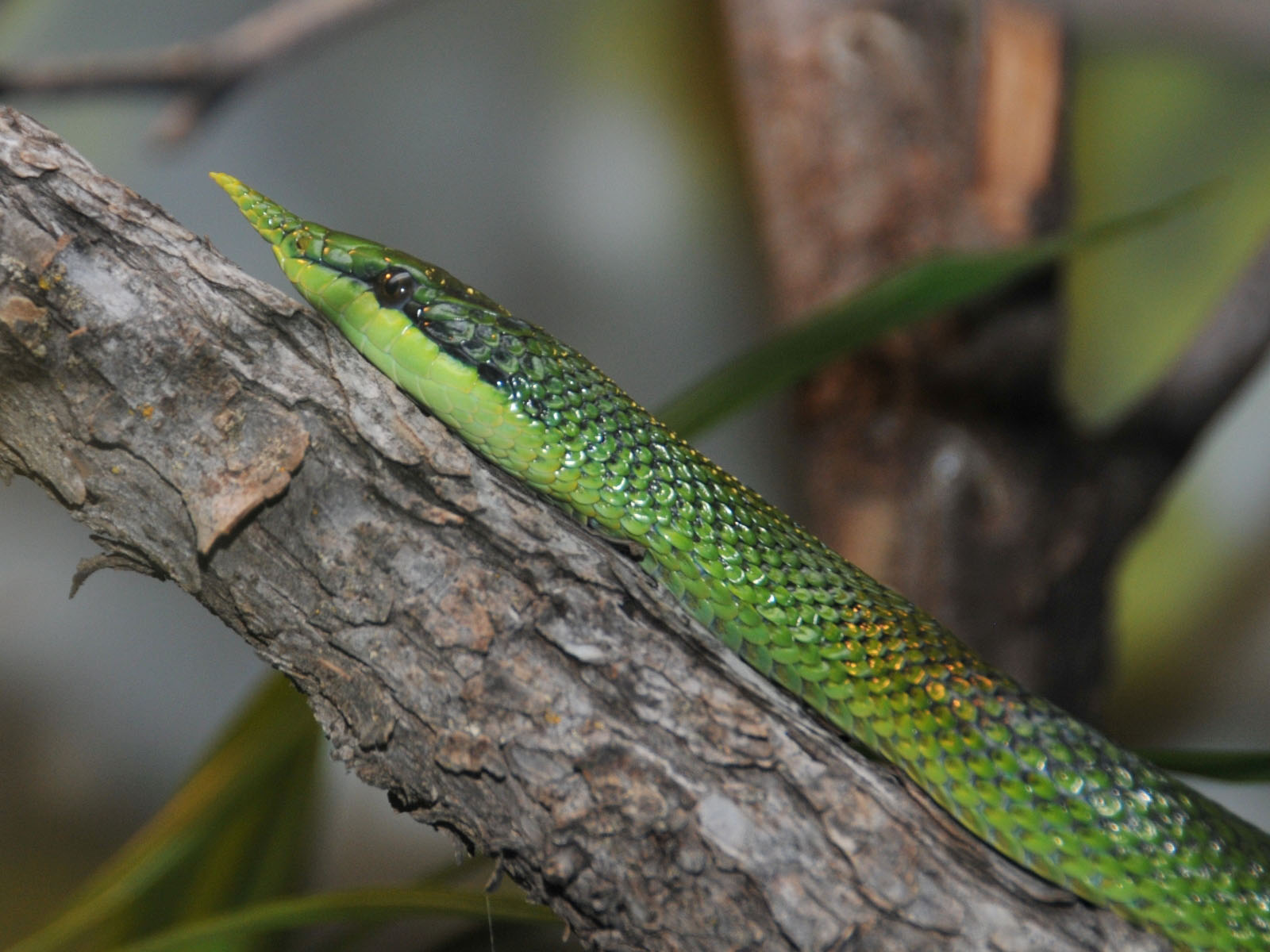
The Vietnamese Longnose Snake has a slender body, distinctive elongated snout, and unique keeled scales creating a ridged appearance.
It specializes in arboreal hunting, using its long nose to probe crevices for prey.
| Scientific Name | Rhynchophis boulengeri |
| Origin | Southeast Asia |
| Habitat | Mountainous forests of Vietnam, southern China, and Laos |
| Fun Fact | They can change color from bright green during the day to brownish at night. |
27. Vanuatu Kingfisher
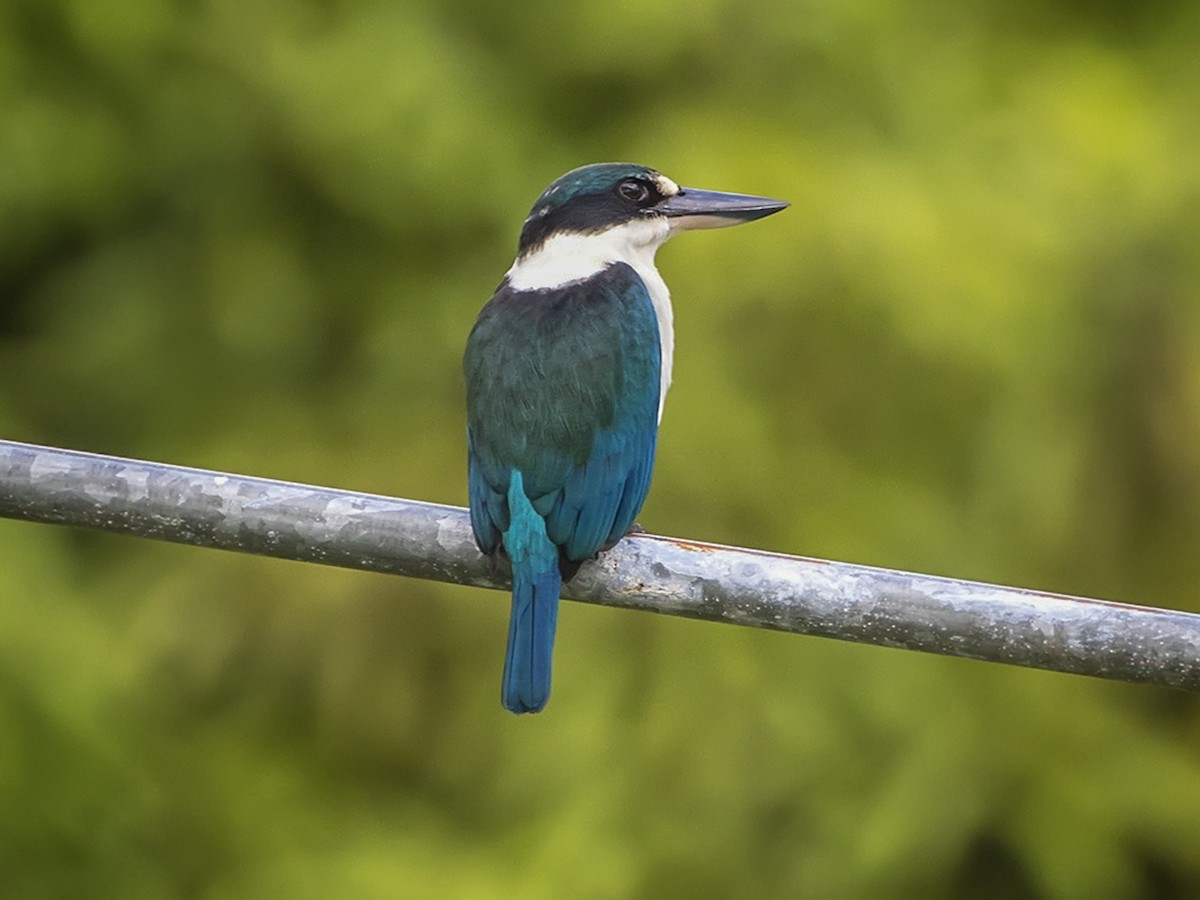
The Vanuatu Kingfisher has vibrant blue upperparts, a white throat, and rusty-orange underparts. It has a large, powerful bill.
It hunts by perching motionless before diving to catch insects, small lizards, or fish.
| Scientific Name | Todiramphus farquhari |
| Origin | Vanuatu |
| Habitat | Forests and woodland areas of Espiritu Santo island in Vanuatu |
| Fun Fact | Unlike many kingfishers, it rarely eats fish, preferring insects and lizards instead. |
28. Violet-crowned Hummingbird
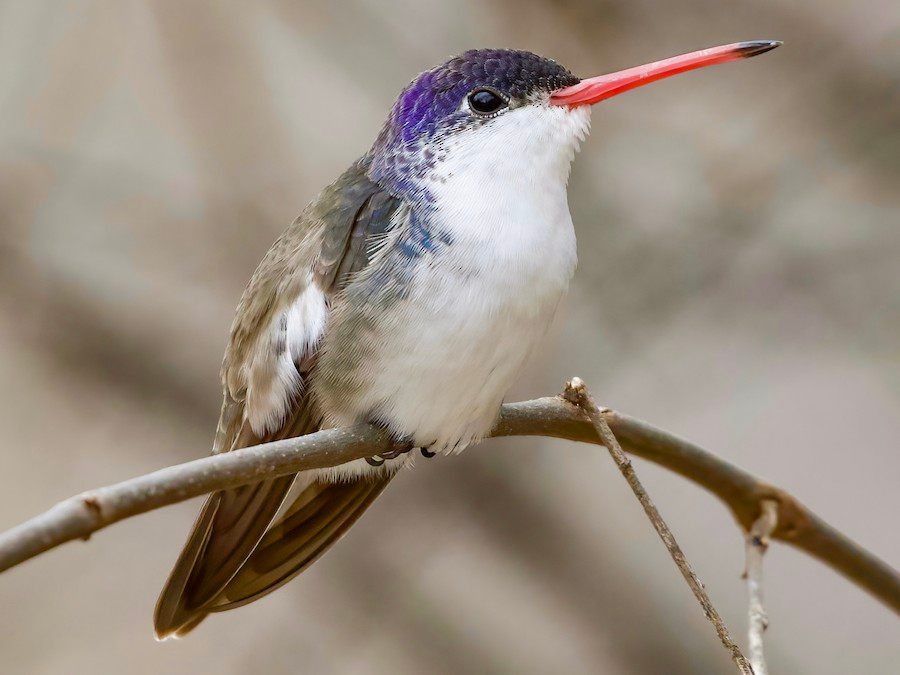
The Violet-crowned Hummingbird has an iridescent violet crown, white underparts, and emerald-green back with a distinctive straight red bill.
It hovers with precision while feeding and can fly backward, upside down, and even upside down.
| Scientific Name | Amazilia violiceps |
| Origin | North America |
| Habitat | Arid scrublands and canyon areas of the southwestern United States and Mexico |
| Fun Fact | Their hearts can beat up to 1,260 times per minute during active flight. |
29. Vervain Hummingbird
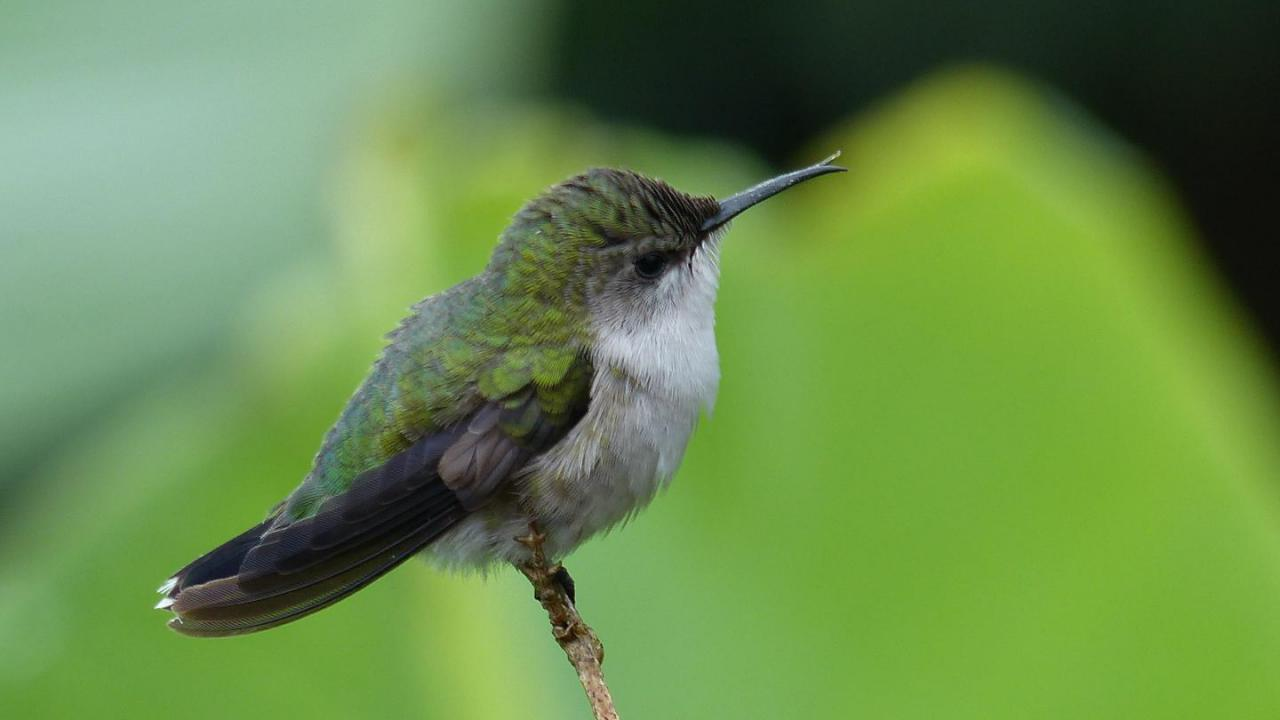
The Vervain Hummingbird is one of the world’s smallest birds with emerald-green upperparts, a glittering violet throat in males, and a slightly curved bill.
It beats its wings up to 80 times per second, creating a distinctive humming sound.
| Scientific Name | Mellisuga minima |
| Origin | Caribbean |
| Habitat | Gardens, forest edges, and scrublands in Jamaica and Hispaniola |
| Fun Fact | Weighing just 2 grams, it’s among the smallest warm-blooded animals on Earth. |
30. Varied Thrush
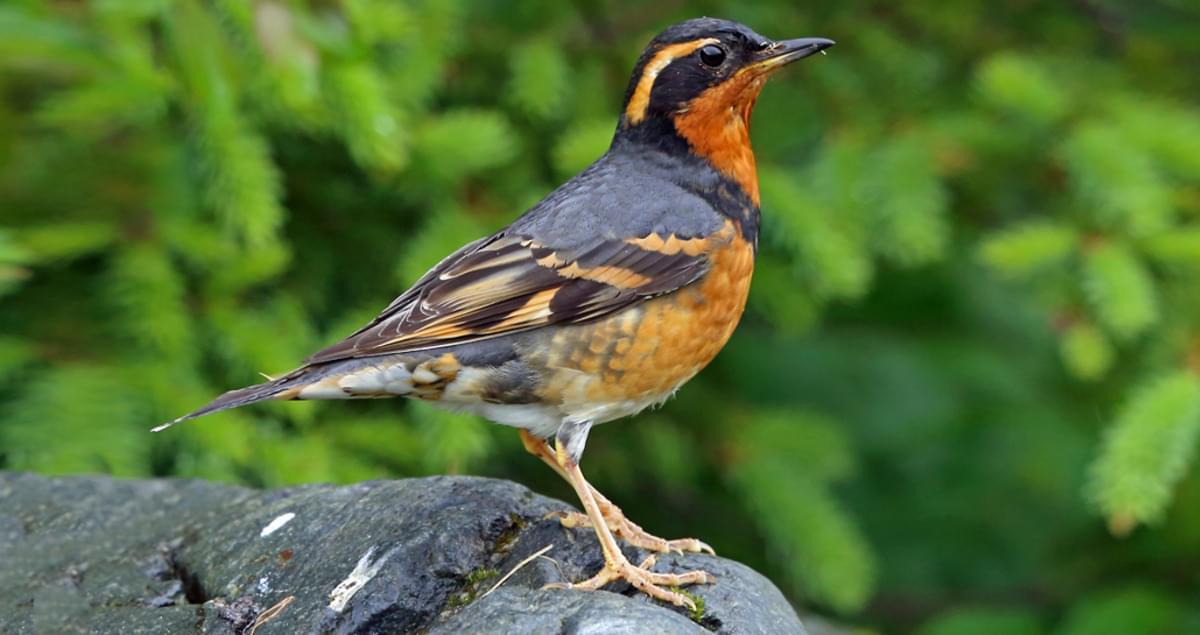
The Varied Thrush has slate-blue upperparts, orange eyebrow stripe and underparts, and a distinctive black breast band.
It produces haunting, ethereal songs that echo through its forest habitat.
| Scientific Name | Ixoreus naevius |
| Origin | North America |
| Habitat | Coniferous forests of the Pacific Northwest and Alaska |
| Fun Fact | Their eerie, single-note songs were used to create mysterious atmosphere in early Hollywood films. |
31. Viperfish
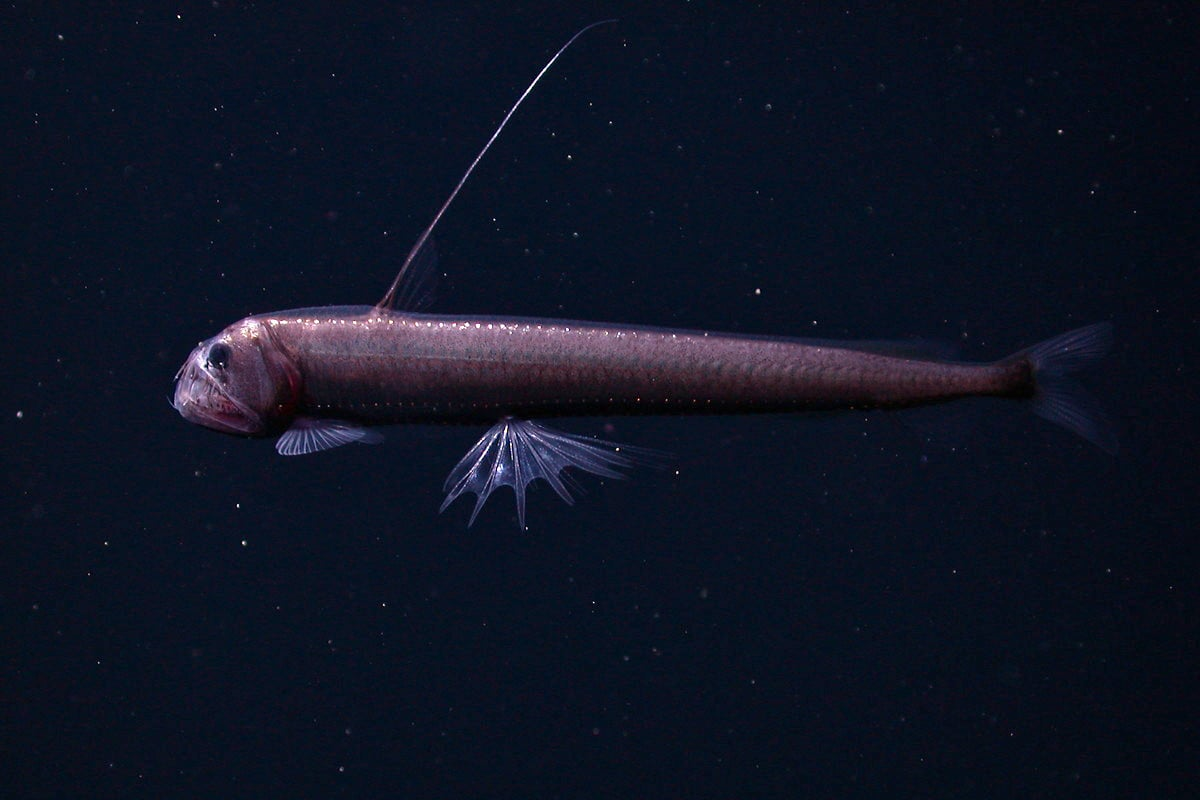
The Viperfish has a grotesque appearance, with enormous fang-like teeth, a hinged jaw, and a bioluminescent lure extending from its dorsal spine.
Its teeth are so large they don’t fit in its mouth, instead curving back along the outside of its head.
| Scientific Name | Chauliodus sloani |
| Origin | Global oceans |
| Habitat | Deep sea environments between 200-5,000 feet below the surface |
| Fun Fact | They can go days or even weeks between meals in the food-scarce deep sea. |
32. Vanikoro Flying Fox
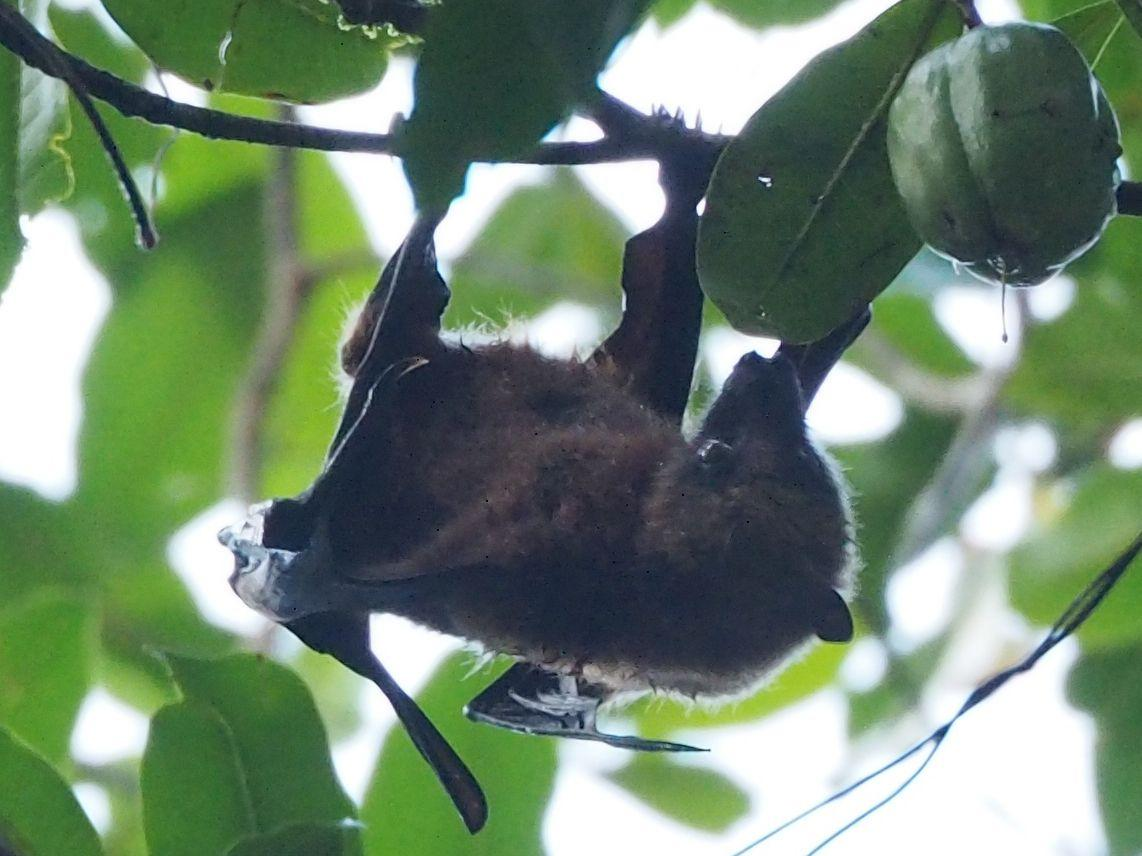
The Vanikoro Flying Fox is a large fruit bat with fox-like face, russet-brown fur, and membranous wings spanning up to 3 feet.
It navigates using keen eyesight rather than echolocation like smaller bats.
| Scientific Name | Pteropus tuberculatus |
| Origin | South Pacific |
| Habitat | Forests of the Vanikoro and Santa Cruz Islands in the Solomon Islands chain |
| Fun Fact | They’re critical pollinators for many tropical trees, carrying pollen in their fur between flowers. |
33. Vagrant Shrew
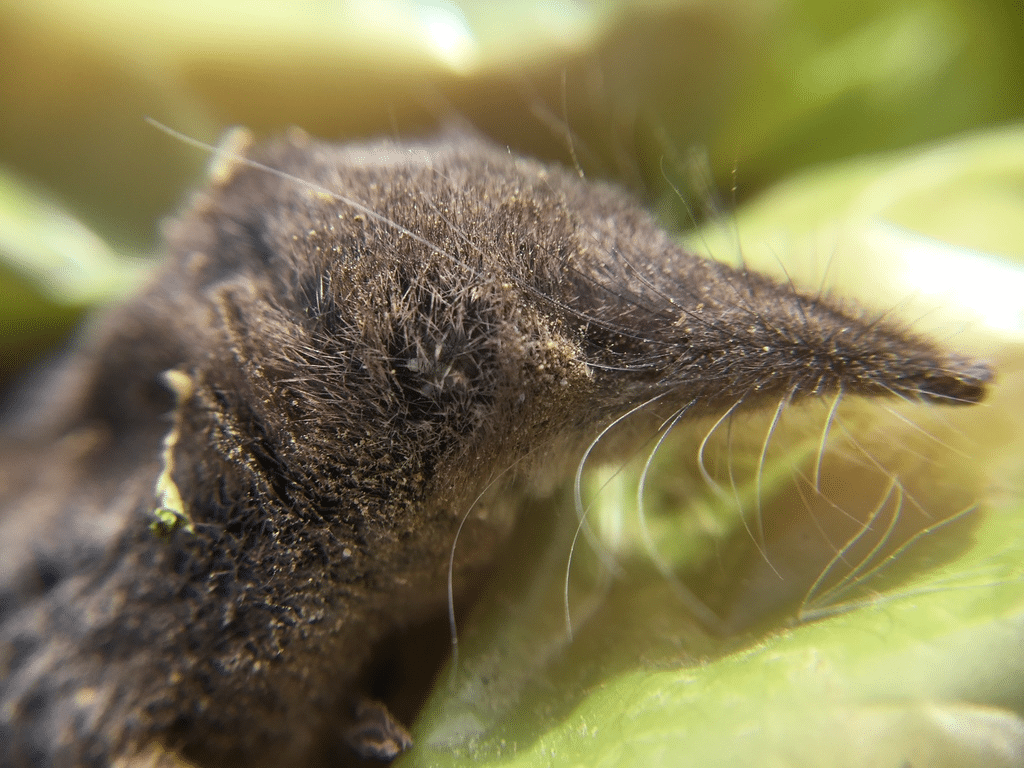
The Vagrant Shrew has a tiny body with velvety brown fur, elongated snout, and nearly invisible ears and eyes.
It has an extremely high metabolism, requiring it to eat more than its body weight daily.
| Scientific Name | Sorex vagrans |
| Origin | North America |
| Habitat | Moist forests, meadows, and wetlands in western North America |
| Fun Fact | Their hearts beat up to 1,200 times per minute, one of the fastest of any mammal. |
34. Variable Sunbird
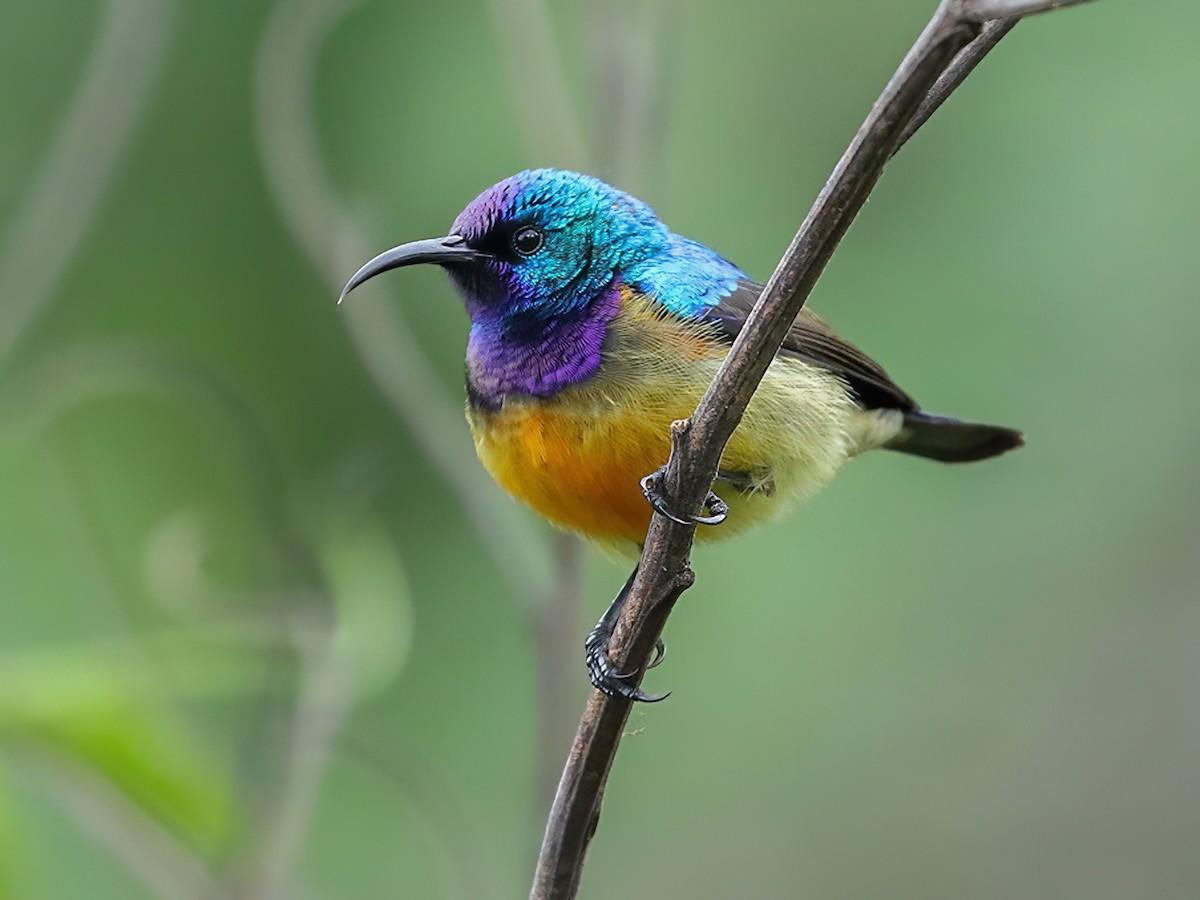
The Variable Sunbird has iridescent plumage in males with metallic purple-blue upperparts and a bright yellow belly, while females are olive-brown.
It has a long, curved bill perfectly adapted for extracting nectar from flowers.
| Scientific Name | Cinnyris venustus |
| Origin | Africa |
| Habitat | Woodlands, gardens, and savannas across sub-Saharan Africa |
| Fun Fact | They construct elegant hanging nests with side entrances and protective awnings above. |
35. Volcano Snail
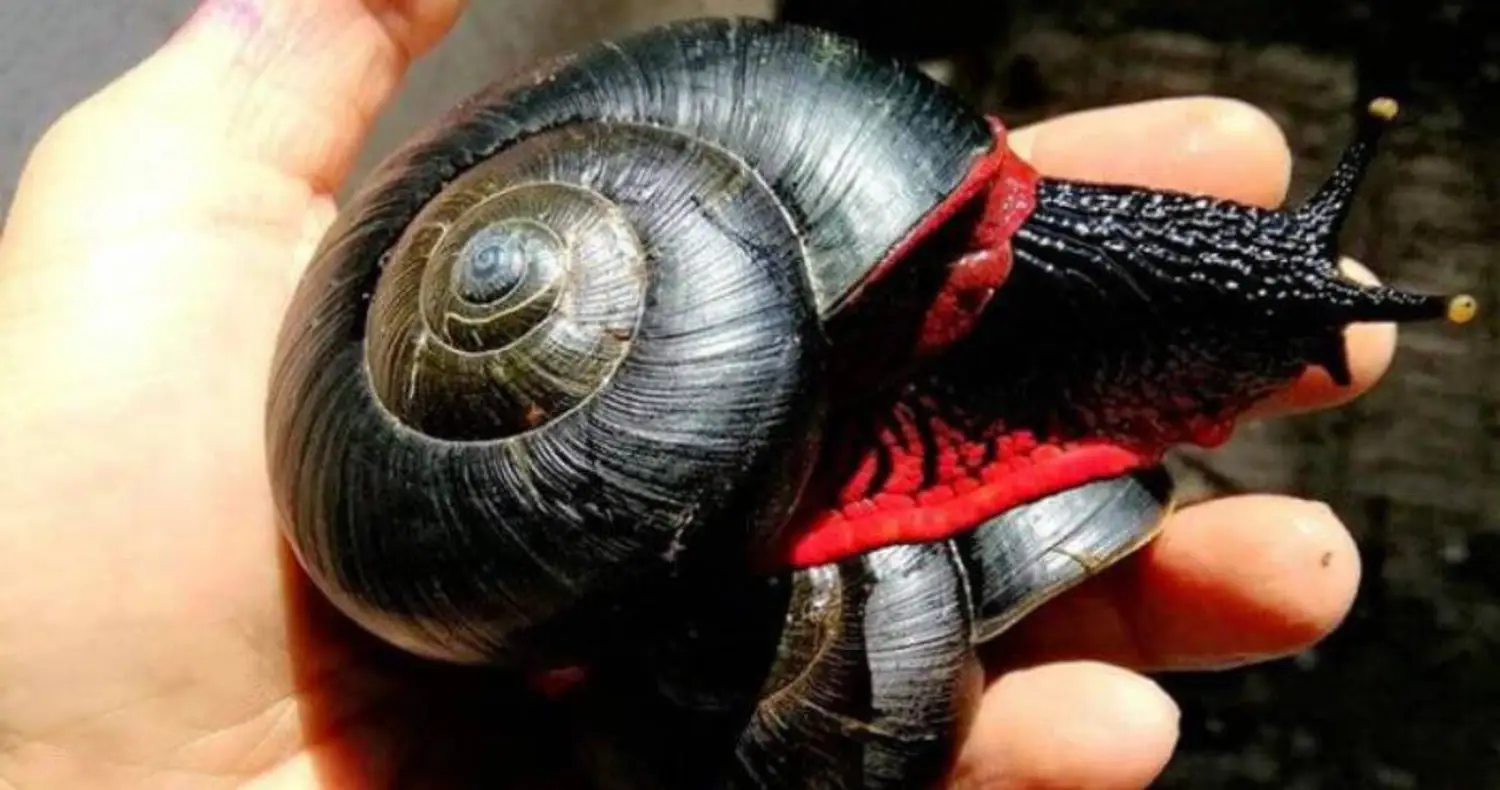
The Volcano Snail has a unique black shell reinforced with iron sulfide minerals and a foot covered with iron plates.
It’s the only known animal that produces iron armor as part of its skeletal structure.
| Scientific Name | Chrysomallon squamiferum |
| Origin | Indian Ocean |
| Habitat | Hydrothermal vents in the deep sea Indian Ocean |
| Fun Fact | They live near underwater volcanoes where temperatures exceed 750°F and can survive crushing pressure 80 times greater than sea level. |
Less-Known Animals That Start With “V”
36. Vulturine Guineafowl
The Vulturine Guineafowl has cobalt-blue plumage, a white-striped neck, and a vulture-like bare head with red and blue skin.
Fun Fact: They form multi-level societies similar to primates, with distinct social tiers that interact in specific ways.
37. Visayan Spotted Deer
The Visayan Spotted Deer has a dark brown coat with beige spots in rows, thin legs, and males have straight antlers.
Fun Fact: One of the world’s rarest deer, with fewer than 300 remaining in the wild on just two Philippine islands.
38. Venezuelan Red Howler
The Venezuelan Red Howler has a rusty-red coat, bearded face, and prehensile tail used as a fifth limb.
Fun Fact: Their howls can be heard up to 3 miles away and are among the loudest sounds produced by any land animal.
39. Vordermann’s Flying Squirrel
Vordermann’s Flying Squirrel has soft brown fur, large eyes for night vision, and skin membranes between limbs for gliding.
Fun Fact: They have specialized wrist cartilage that acts like a rudder, allowing precise steering during aerial glides.
40. Vietnamese Centipede
The Vietnamese Centipede has a flattened segmented body with 21-23 leg pairs, striking blue-green coloration, and powerful venomous fangs.
Fun Fact: Despite having dozens of legs, they can sprint at speeds up to 1.3 feet per second—equivalent to a human running 70 mph.
41. Velvet Gecko
The Velvet Gecko has velvety skin with mottled brown and gray patterns, bulging eyes with vertical pupils, and adhesive toe pads.
Fun Fact: Their skin feels remarkably soft like velvet due to microscopic hair-like structures that trap air and reduce friction.
42. Vellore Catfish
The Vellore Catfish has a scaleless body with mottled brown coloration, prominent barbels around its mouth, and a flattened head.
Fun Fact: They can survive in nearly dried-up mud puddles by breathing atmospheric oxygen and entering a state of dormancy.
43. Vanneau (Northern Lapwing)
The Vanneau has iridescent green upperparts, black chest, white face and underparts, and a distinctive wispy crest.
Fun Fact: They deliberately lead predators away from their nests by pretending to be injured, dragging a wing as if broken.
44. Variegated Wrasse
The Variegated Wrasse has a colorful pattern of green, blue, and orange markings that vary greatly between individuals, with a streamlined body.
Fun Fact: They perform a “sleep cocoon” ritual at night, secreting a mucus bubble around themselves that masks their scent from predators.
45. Viperine Water Snake
The Viperine Water Snake has zigzag patterning similar to vipers but is non-venomous, with keeled scales giving it a rough appearance.
Fun Fact: This harmless snake mimics the appearance and defensive behaviors of venomous vipers so effectively that it’s often killed by mistake.
46. Vietnamese Mossy Frog
The Vietnamese Mossy Frog has bumpy skin with green and brown mottling that perfectly mimics moss and lichen.
Fun Fact: When threatened, they curl into a ball, tuck their head and limbs in, and play dead, looking exactly like a clump of moss.
47. Vespula Germanica (German Wasp)
The German Wasp has black and bright yellow striped abdomen, a triangular black marking on its face, and transparent wings.
Fun Fact: A single colony can capture over 250,000 insects in a season to feed their developing larvae.
48. Vallisneria Shrimp
The Vallisneria Shrimp has a nearly transparent body with subtle green or brown markings and extremely long, thin antennae.
Fun Fact: They perform an important symbiotic cleaning service for aquarium fish, removing parasites and dead skin.
49. Velvet Belly Lanternshark
The Velvet Belly Lanternshark has a velvety-black underside, brownish upper body, and distinctive light-producing photophores along its belly.
Fun Fact: Their glowing belly disguises their silhouette from predators below, a camouflage technique called counter-illumination.
50. Vine Leafhopper
The Vine Leafhopper has a wedge-shaped body with vibrant patterns in green, red, or yellow, and powerful hind legs.
Fun Fact: They communicate through substrate vibrations transmitted through plants, creating species-specific “songs” inaudible to human ears.
51. Vietnamese Walking Stick
The Vietnamese Walking Stick has an elongated body perfectly mimicking a twig, complete with irregular bumps resembling buds or bark.
Fun Fact: Females can reproduce parthenogenetically without males, creating clones of themselves when no mates are available.
52. Vachellia Ant
The Vachellia Ant has a reddish-brown body with a distinctive spiny appearance and powerful mandibles for defense.
Fun Fact: They live inside hollow acacia thorns and attack anything that touches their host tree, even large mammals like giraffes.
53. Virgin Islands Coqui
The Virgin Islands Coqui is a tiny frog with varied brown, tan, or green coloration and distinctive toe pads for climbing.
Fun Fact: Male coquis produce loud “ko-kee” calls that can reach 90 decibels, making them one of the loudest amphibians for their size.
54. Vagrant Emperor (dragonfly)
The Vagrant Emperor has a brownish body with clear wings and green-blue eyes that meet at the top of its head.
Fun Fact: They’re remarkable globe-trotters, known to suddenly appear in regions thousands of miles from their typical range.
55. Variegated Laughingthrush
The Variegated Laughingthrush has intricate patterning of browns, grays and whites, with a distinctive black mask and bright yellow bill.
Fun Fact: They engage in cooperative breeding where multiple adults help raise a single brood of chicks.
56. Vine Weevil
The Vine Weevil has a pear-shaped black body with yellow flecks, distinctive grooved wing cases, and a characteristic snout with elbowed antennae.
Fun Fact: Adult females can reproduce without mating, laying up to 1,000 eggs in their lifetime through parthenogenesis.
57. Virginia Rail
The Virginia Rail has a rusty-colored body, gray cheeks, and a long, slightly downward-curved bill with a laterally compressed body.
Fun Fact: These birds build “dummy nests” near their real nests to confuse predators, and chicks can swim within hours of hatching.
58. Variegated Butterflyfish
The Variegated Butterflyfish has a disk-shaped body with yellow and white patterns, black vertical stripes, and a distinctive black spot near its tail.
Fun Fact: They form monogamous pairs for life and swim in perfect synchrony, even turning and feeding simultaneously.
59. Velvet Mite
The Velvet Mite has a bright red, oval body covered with velvety hair-like setae and eight legs positioned toward the front of its body.
Fun Fact: Their remarkable red color comes from carotenoid pigments they cannot produce but must obtain from their diet.
60. Vampire Ground Finch
The Vampire Ground Finch has gray plumage with darker wings, a distinctive pointed beak, and unusual feeding behavior for a finch.
Fun Fact: They evolved this vampire-like behavior as an adaptation to the harsh Galápagos environment where seeds are often scarce.
61. Volcanic Rim Gecko
The Volcanic Rim Gecko has rough, bumpy skin with mottled brown and gray coloration matching volcanic rock, and specialized toe pads.
Fun Fact: Their specialized cells can repair DNA damage from the high radiation levels found near volcanic vents.
62. Verreaux’s Sifaka
Verreaux’s Sifaka has white fur with a black face, golden-orange eyes, and powerful hind legs adapted for vertical leaping.
Fun Fact: They can leap over 30 feet between trees and “dance” sideways when moving on the ground to conserve energy.
63. Variegated Lady Beetle
The Variegated Lady Beetle has a dome-shaped body with variable patterns of black spots on red, orange, or yellow wing covers.
Fun Fact: They release a bitter fluid from their leg joints when threatened that smells and tastes unpleasant to predators.
64. Velvet Tamarind Bat
The Velvet Tamarind Bat has velvety brown fur, large ears for enhanced hearing, and specialized teeth for processing fruit.
Fun Fact: Their specialized digestive system processes fruit pulp in as little as 15 minutes, allowing them to consume up to twice their body weight nightly.
65. Violet Carpenter Bee
The Violet Carpenter Bee has a robust black body with iridescent violet-blue wings, dense hair on its thorax, and powerful jaws.
Fun Fact: Despite their intimidating size and loud buzz, males have no stinger, and females rarely sting unless handled.
66. Vampire Crab
The Vampire Crab has a rounded purple, orange, or red shell, bright yellow or red eyes, and contrasting white claws.
Fun Fact: Their name comes from their eerily glowing eyes and their tendency to emerge primarily at night to feed.
67. Vulturine Parrot
The Vulturine Parrot has vibrant green plumage, a distinctive bare, vulture-like head with orange-yellow skin, and a powerful hooked bill.
Fun Fact: Unlike most parrots, they spend significant time foraging on the ground, where their unusual bare heads prevent feather soiling.
68. Vietnamese Salamander
The Vietnamese Salamander has a slender body with smooth, moist skin in shades of brown or black with yellow spots or stripes.
Fun Fact: Some species can delay metamorphosis indefinitely, remaining in their aquatic larval form while becoming reproductively mature.
69. Vicuña Moth
The Vicuña Moth has soft, tan to golden-brown wings with subtle patterns resembling vicuña wool, and feathery antennae.
Fun Fact: Their wing scales contain natural sound-absorbing structures that have inspired designs for acoustic insulation technology.
70. Vangidae (Vanga birds)
Vanga birds have diverse appearances but typically feature strong, hooked bills, contrasting black and white plumage, and robust bodies.
Fun Fact: They represent one of evolution’s most remarkable examples of adaptive radiation, filling diverse ecological roles on Madagascar.
71. Valley Quail
The Valley Quail has a distinctive forward-curling black plume on its head, scaled gray-brown plumage, and a round, compact body.
Fun Fact: Newly hatched chicks can run and feed themselves within hours of hatching but are kept warm under parents’ wings for several weeks.
72. Vang Pheasant
The Vang Pheasant has iridescent blue-green plumage on its body, copper-red wings, a distinctive white collar, and long tail feathers.
Fun Fact: Males maintain a harem of females and will defend their territory against intruders with powerful kicks from their sharp-spurred legs.
73. Vervet Forest Skink
The Vervet Forest Skink has a cylindrical body with smooth, glossy scales in bronze to olive coloration and a blue-tinged tail in juveniles.
Fun Fact: Their tail regeneration is imperfect, with the replacement tail containing cartilage rather than vertebrae and often showing different coloration.
74. Volcano Mouse
The Volcano Mouse has dense, dark fur for insulation, rounded ears, and specialized incisors that continue growing throughout its life.
Fun Fact: They can survive in areas with toxic volcanic gases by remaining in their burrows when gas concentrations increase.
75. Violet Darter
The Violet Darter has a striking violet-blue abdomen in males, amber-tinted wings, and large compound eyes that nearly meet at the top of the head.
Fun Fact: Their remarkable vision comes from nearly 30,000 individual facets in each eye, giving them nearly 360-degree sight.
76. Velvet Flycatcher
The Velvet Flycatcher has velvety black plumage with contrasting white patches on wings and tail, and specialized bristles around its bill.
Fun Fact: They can identify and track specific individual insects within swarms of thousands, targeting the largest prey for maximum nutrition.
77. Vampire Mite
The Vampire Mite has a tiny, nearly transparent body with eight legs, specialized piercing mouthparts, and no eyes.
Fun Fact: Some species synchronize their reproduction with their host’s nesting cycle, with females laying eggs that time perfectly with new host generations.
78. Variegated Fritillary (butterfly)
The Variegated Fritillary has orange-brown wings with black spots and distinctive silver patches on its underwings.
Fun Fact: Unlike many butterflies that specialize on a single plant family, they can utilize host plants from five different plant families.
79. V-shape Dragonet
The V-shape Dragonet has a flattened body with ornate patterns featuring a distinctive V-marking, large pectoral fins, and an upward-facing mouth.
Fun Fact: Males transform dramatically during breeding, developing elongated fins and intensified coloration unlike their normally camouflaged appearance.
80. Vintager Beetle
The Vintager Beetle has a metallic green or copper exoskeleton, clubbed antennae, and powerful mandibles for chewing grape leaves.
Fun Fact: Ancient vintners used to predict wine quality based on beetle population sizes in their vineyards, giving these insects their common name.
81. Violet Sea Snail
The Violet Sea Snail has a delicate purple shell, a modified foot that creates a floating raft of bubbles, and feeds on Portuguese man o’ war.
Fun Fact: They construct their bubble rafts by blowing mucus bubbles with their foot, creating a durable float that can last for months.
82. Virginia Pine Snake
The Virginia Pine Snake has a robust body with keeled scales creating a rough texture, dark blotches on a lighter background, and a pointed snout.
Fun Fact: They can inflate their body and vibrate their tail in leaves to mimic rattlesnakes, despite being non-venomous.
83. Vibrant Wrasse
The Vibrant Wrasse has a streamlined body with kaleidoscopic coloration that changes throughout its life, with males being more colorful than females.
Fun Fact: They perform a remarkable daily ritual of burying themselves in sand at night, secreting a protective mucus cocoon while they sleep.
84. Vespula Squamosa (Southern Yellowjacket)
The Southern Yellowjacket has a distinctive black and yellow striped pattern, transparent wings, and a smooth stinger that can deliver multiple stings.
Fun Fact: Their colonies can contain up to 5,000 workers, all typically daughters of a single queen who may live several years.
85. Virginia Tiger Moth
The Virginia Tiger Moth has cream-colored forewings with brown patterns, bright pink or yellow hindwings, and a furry white body with black spots.
Fun Fact: As caterpillars, they’re known as “woolly bears” and can survive complete freezing, with their bodies producing natural antifreeze compounds.
86. Vanda Parrotfish
The Vanda Parrotfish has a beak-like mouth formed by fused teeth, vibrant blue-green body coloration, and a prominent bump on its forehead.
Fun Fact: A single parrotfish can produce over 800 pounds of sand annually as it grinds coral while feeding, contributing significantly to beach formation.
87. Vexillum (genus of sea snails)
Vexillum sea snails have elongated, spindle-shaped shells with distinctive ridged surfaces, vibrant patterns, and a long siphonal canal.
Fun Fact: Their intricate shell patterns have inspired textile designs, with some species historically being worth more than their weight in gold.
88. Veld Antelope
The Veld Antelope has a tawny coat with white underparts, distinctive black facial markings, and both sexes typically bearing ringed horns.
Fun Fact: They perform a behavior called “pronking” where they leap high into the air with a stiff-legged bounce, possibly to confuse predators.
89. Van Hasselt’s Sunbird
Van Hasselt’s Sunbird has iridescent metallic blue-black plumage in males with a bright red chest patch, while females are olive-green.
Fun Fact: Their metabolism is so rapid they must feed almost continuously, consuming up to twice their body weight in nectar daily.
90. Violet Cuckoo
The Violet Cuckoo has glossy violet-copper upperparts in males, barred underparts, and a distinctive red eye-ring and bill.
Fun Fact: The chicks can mimic the begging calls of multiple host species, adapting their vocalizations to manipulate whatever species is raising them.
91. Vanikoro Broad-nosed Bat
The Vanikoro Broad-nosed Bat has a fox-like face with wide, flat muzzle, large forward-facing eyes, and soft copper-brown fur.
Fun Fact: Unlike most bats, they don’t use echolocation but instead rely on excellent vision and smell to find fruit in the dark.
92. Valley Coral Snake
The Valley Coral Snake has distinctive red, black, and yellow or white rings encircling its body, a blunt head barely wider than its neck, and short fangs.
Fun Fact: They’re one of the few venomous snakes that retain their bright warning coloration even when sleeping underground.
93. Vietnamese Tiger Gecko
The Vietnamese Tiger Gecko has striking orange and black “tiger stripe” patterns, tubercular scales creating a rough texture, and lidless eyes with vertical pupils.
Fun Fact: They can vocalize with a series of chirping sounds used for territorial displays and finding mates in dense vegetation.
94. Veld Rat
The Veld Rat has a gray-brown coat, long whiskers, naked tail, and large ears that help regulate body temperature in hot climates.
Fun Fact: They’ve developed resistance to common rodenticides, with some populations able to consume amounts that would kill other mammals of similar size.
95. Violet Ear Butterfly
The Violet Ear Butterfly has iridescent blue-purple wings with contrasting dark borders and distinctive “ear” projections on its hindwings.
Fun Fact: Their wing scales contain no actual blue pigment—the color comes from microscopic structures that reflect light in specific wavelengths.
96. Volga Pikeperch
The Volga Pikeperch has an elongated body with gray-green coloration, dark vertical bars, and distinctive canine teeth in its large mouth.
Fun Fact: Their eyes contain a specialized reflecting layer that gives them excellent night vision and causes their eyes to glow when light hits them.
97. Violet Nudibranch
The Violet Nudibranch has a vibrant purple body with elaborate respiratory tentacles (cerata) projecting from its back and rhinophores resembling horns on its head.
Fun Fact: They’re simultaneous hermaphrodites, possessing both male and female reproductive organs, but still require a partner to mate.
98. Varied Carpet Beetle
The Varied Carpet Beetle has an oval body covered with distinctive scale patterns in white, brown, and yellow creating a mottled appearance.
Fun Fact: Adults feed on pollen and nectar, looking nothing like their destructive larvae which are responsible for their pest reputation.
99. Vietnamese Water Dragon
The Vietnamese Water Dragon has emerald green scales, a distinctive crest running from head to tail, and powerful limbs with sharp claws.
Fun Fact: They have a specialized “third eye” on top of their head—a photosensitive organ that detects light and shadow movements from above.
100. Variable Platyfish
The Variable Platyfish has a laterally compressed body with coloration ranging from olive to bright orange, blue, or spotted patterns.
Fun Fact: They’re one of the first animals in which scientists discovered that cancer can be inherited, leading to important medical research.
101. Virgin Sand Digger (crab)
The Virgin Sand Digger has a pale, sand-colored carapace with speckled patterns, specialized digging claws, and eyestalks that can be retracted.
Fun Fact: They create intricate spiral burrows that can reach over 3 feet deep, with specialized chambers for hiding from predators and storing food.
102. Vine Snakefly
The Vine Snakefly has an elongated head and prothorax resembling a snake, transparent wings held roof-like over its body, and a long ovipositor in females.
Fun Fact: Their larvae have powerful jaws and hunt under tree bark for up to three years before transforming into adults that live just a few weeks.
103. Viper Gecko
The Viper Gecko has a triangular head resembling venomous vipers, vertical pupils, and rough, keeled scales giving it a dragon-like appearance.
Fun Fact: Despite their intimidating viper-like appearance, they’re completely harmless and actually specialize in eating venomous scorpions.
104. Victorian Grasshopper
The Victorian Grasshopper has vibrant coloration often featuring red, blue, or yellow markings, large hind legs for jumping, and distinctive antennae.
Fun Fact: Their ears are located on their abdomens rather than their heads, allowing them to precisely locate the source of sounds.
105. Violet Ground Beetle
The Violet Ground Beetle has a metallic purple-blue carapace, fluted edges on its wing covers, and powerful mandibles for crushing prey.
Fun Fact: Despite having wings under their hardened covers, most have lost the ability to fly, evolving instead for swift ground movement.
106. Variable Lizardfish
The Variable Lizardfish has an elongated body with mottled brown camouflage, a lizard-like head with numerous sharp teeth, and eyes positioned for binocular vision.
Fun Fact: They have needle-like teeth not just on their jaws but also on their tongues and the roof of their mouths, ensuring prey can’t escape once caught.
107. Vanikoro Worm-Eel
The Vanikoro Worm-Eel has an extremely elongated, snake-like body with reduced fins, small embedded scales giving a smooth appearance, and a pointed tail.
Fun Fact: They can survive for extended periods in nearly oxygen-depleted environments by reducing their metabolism to near-dormant levels.
108. Valley Woodpecker
The Valley Woodpecker has black and white patterned plumage, a red crown in males, a strong chisel-like bill, and a stiff tail used as a prop when climbing.
Fun Fact: Their skulls have specialized spongy bone structures that act as shock absorbers, protecting their brains from the constant hammering impact.
109. Volcanic Bumblebee
The Volcanic Bumblebee has a robust, fuzzy body with black and yellow banding, transparent wings, and specialized pollen-collecting structures on its legs.
Fun Fact: They’ve adapted to life around volcanic vents, with colonies sometimes surviving in soil heated by geothermal activity.
110. Velvet Swordtail (fish)
The Velvet Swordtail has a streamlined body with velvety black coloration, elongated lower tail fin in males resembling a sword, and live-bearing reproduction.
Fun Fact: The male’s sword appendage evolved through sexual selection—females prefer longer “swords” despite them making males more vulnerable to predators.
111. Vervet Dwarf Gecko
The Vervet Dwarf Gecko has tiny size rarely exceeding two inches, mottled green-brown coloration for camouflage, and disproportionately large eyes.
Fun Fact: They can shed their skin and consume it afterward, recycling valuable nutrients and leaving no trace for predators to detect.
Conclusion
The V collection reveals nature’s ingenious solutions to survival challenges.
These animals demonstrate striking specialization: the Vulturine Guineafowl forms complex social hierarchies rivaling primates, while the Vampire Ground Finch evolved blood-drinking habits on resource-scarce Galápagos islands.
The Viper Gecko’s false venomous appearance deters predators despite being harmless, and the Vietnamese Mossy Frog disappears completely against lichen-covered rocks.
From the Varied Bunting’s microscopic feather structures, which create color through light refraction, to the Volga Pikeperch’s specialized eye tissue, which enables night vision, these adaptations showcase evolutionary brilliance.
Which “V” animal surprised you the most?
Share your favorite in the comments below, or tell us about a “V” animal we might have missed. Have you encountered any of these creatures in your travels?

